FishProfiles.com Message Forums |
| faq | etiquette | register | my account | search | mailbox |
| Mega Powerful Nitrate and Phosphate Remover - DIY! | |
santamonica Enthusiast Posts: 152 Kudos: 17 Registered: 19-Sep-2008   | Part 3 of 7: Taken from "The Food of Reefs, Part 3: Phytoplankton" by Eric Borneman http://www.reefkeeping.com/issues/2002-10/eb/index.php "Phytoplankton are the major source of primary [food] production in the ocean, and one of the most important driving forces of global ecology. In fact, phytoplankton production influences all life, by being at the lowest rings of the food chain. "The reason [phytoplankton] are so important on a regional or global scale is simply by virtue of the fact that the upper 200 [meters] of oceanic waters is filled with phytoplankton and covers over 70% of the earth's surface. "What eats phytoplankton? In the water column, zooplankton [food] are without question the primary consumers of phytoplankton. Zooplankton grazers vary according the area and the time of year, but include primarily ciliates, copepods, amphipods, and tintinnids. "Stony corals are generally not well adapted to the sieve or filter type feeding that characterizes the soft corals (Fabricius et al. 1995, 1998). They are, however, well suited to the capture of zooplankton prey. "It is of paramount importance to recognize that the biomass of potential grazers [which need food] in an aquarium is many times what it would be in the same volume of water or surface area as the bottom of oceans or on reefs, and also, that the availability of water column borne food is many times greater in the ocean than in an aquarium. "Perhaps most importantly, is the almost ubiquitous interaction between bacteria and phytoplankton. Phytoplankton release dissolved organic substances, and bacteria utilize them as nutrient sources. Most phytoplankton cells, especially large ones, are coupled nearly continuously with coatings of bacteria [which are consuming the dissolved organic substances]. "The amounts of phytoplankton present in reef aquariums are not known but are probably considerable. However, they are also probably rapidly removed by grazing and export devices [skimmers]. 888-CORAL-REEF Filtering discussion: www.AlgaeScrubber.net |
santamonica Enthusiast Posts: 152 Kudos: 17 Registered: 19-Sep-2008   | Bob the (reef) Builder on the SARK site made this PDF for a club presentation three months ago, and I just found it; maybe it could be used by others: http://www.radio-media.com/fish/AlgaeFilters.pdf 888-CORAL-REEF Filtering discussion: www.AlgaeScrubber.net |
santamonica Enthusiast Posts: 152 Kudos: 17 Registered: 19-Sep-2008   | |
santamonica Enthusiast Posts: 152 Kudos: 17 Registered: 19-Sep-2008   | Results of the week: Broder on the SARK site: "I have been running my tank with an algal filter for about 3 months now. I removed the skimmer on the 10th last month. My display has never looked better. The [nuisance] algae has almost totally dissapeared. My SPS colonies are thriving. Not only are they growing well, but the colouration has become vibrant due to 0 PO4 (Salifert test) and 0 nitrate. I've seen better colouration in systems that were using Zeovit, but I'm more than happy with the results the algal filter achieves." Sly on the SWF site: "The back glass used to be absolutely covered in green algae, but now it's staying clean on its own. I have never cleaned it. The rocks weren't that bad, but there were some patches of cyano in places that are now gone. It now seems to be staying cleaner on its own. My ORP has started rising again and is a 270mv without ozone. I don't know if it's related but as my tank levels have improved lately, my Mandarin is coming out more in the day time. This is the first picture I have ever been able to get of him in the open... and I've had him for over 2 years. The live rock and the substrate both have zero algae on them" TODJ2002 on the SWF site: "i added a scrubber several months ago after reading this thread. my nitrates and P slowly lowered and went to zero for the first time. they have both been at zero since. everytime i check levels i am expecting to see a rise, but always zero. i also added cheato to my system and i believe boths items are a must for any system." Adee on the SARK site: "Ok so its been about 6 weeks since i fired this scrubber up. Did the 1st "harvest" on just the one side; i'll do the other side next weekend. My phosphate reading is a zero according the Elos color chart... and for the very first time the complete back glass pane has broken out with coraline algae. Its never done that before due to the back always being covered with the normal glass algae/diatoms. Since the latter no longer appears, the coraline is now growing. I'm sure in a few weeks I'll have a complete pink wallpaper at the back. The fact that the scrubber makes the ideal platform for all this gunk to grow OUTSIDE my display tank, was well worth the investment." Bob the (reef) Builder on the SARK site: "Both my filters are going great guns. Probably the best is the sun [powered] one, it's big and now that its settled, grows algea like crazy. My phospates down to 0.00 - 0.01ppm on a Hanna meter. Never seen it this low before. My corals are starting to grow and colour up really well now." RentalDeceptionist on the UR site: "Ooh the [nuisance] algae. Well, it has certainly receeded massively. It's not 100% gone but I feel I'm on top of it. The hair algae which virtually smothered every flat surface is now down to about 20% of its mass, and there is more rock than algae. I do believe decreasing the lighting has helped." 888-CORAL-REEF Filtering discussion: www.AlgaeScrubber.net |
santamonica Enthusiast Posts: 152 Kudos: 17 Registered: 19-Sep-2008   | "Kcress" on the algae scrubber site has just finished his version of a G2 LED scrubber, for testing. A G2 is a self-contained scrubber, but the LEDs themselves are not the screen, like they are with a G3. Anyways, for testing purposes, he only has LED's on one side of the screen, and he only used low-power LEDs to avoid heat issues: 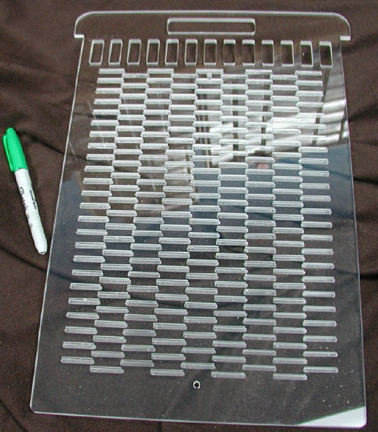 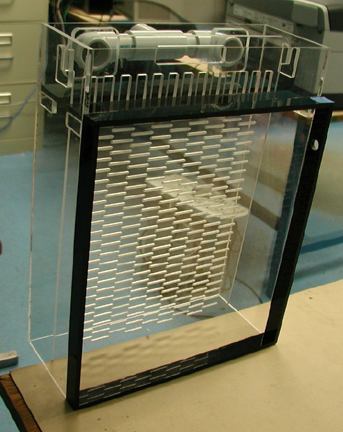 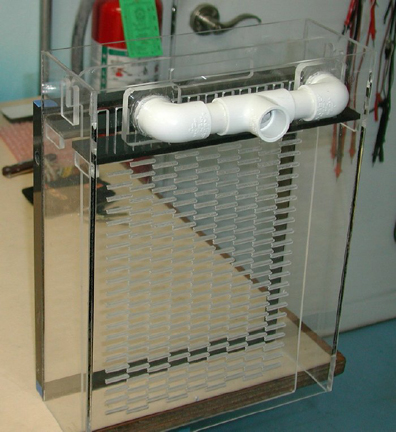 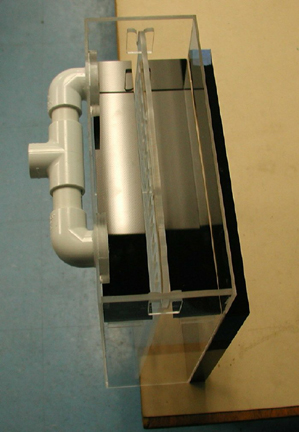 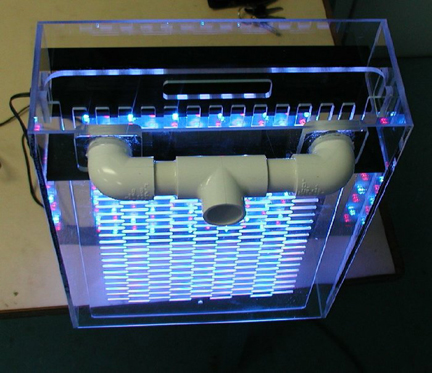 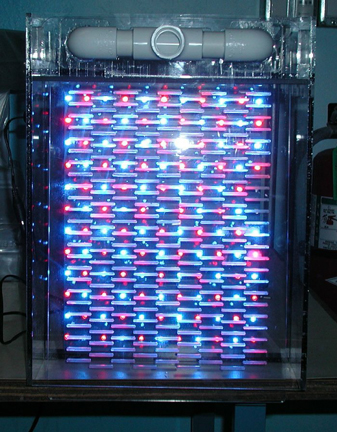 888-CORAL-REEF Filtering discussion: www.AlgaeScrubber.net |
santamonica Enthusiast Posts: 152 Kudos: 17 Registered: 19-Sep-2008   | "Kcress" on the algae scrubber site has just finished his version of a G2 LED scrubber, for testing. A G2 is a self-contained scrubber, but the LEDs themselves are not the screen, like they are with a G3. Anyways, for testing purposes, he only has LED's on one side of the screen, and he only used low-power LEDs to avoid heat issues:       888-CORAL-REEF Filtering discussion: www.AlgaeScrubber.net |
santamonica Enthusiast Posts: 152 Kudos: 17 Registered: 19-Sep-2008   | Part 4 of 7: Taken from "The Food of Reefs, Part 4: Zooplankton" by Eric Borneman http://www.reefkeeping.com/issues/2002-12/eb/index.php [Note: "Zooplankton" are tiny animals (food) floating in the water] "Copepods comprise by far the largest fraction of total zooplankton - more than all the other groups combined. "Zooxanthellate corals (many diverse species) could survive "indefinitely" if provided with adequate zooplankton, even if totally deprived of light. In contrast, corals provided light and deprived of zooplankton did not survive. "One of the greatest myths among reefkeepers is that "SPS" corals depend mostly on light, and require less food than "LPS" corals. This is entirely untrue. As an example, consider the data from [pic not shown]. This graph shows the capture rate of an equivalent biomass of two corals, the large-polyped Montastraea cavernosa and the very small-polyped Madracis mirabilis. For those unfamiliar with Madracis, it is related to and somewhat resembles Pocillopora and Stylophora. The capture rate of the small polyped coral was 36 times greater than the large-polyped coral! Furthermore, M. cavernosa has been shown in other studies to be a voracious zooplanktivore. "Many other studies confirm the predatory [feeding] abilities and requirements of "SPS" corals. It should not be surprising, given the fast growth rate and fecundity of many small polyped species. In other words, more growth and reproduction requires more energy, especially nitrogen for tissue growth. The difference, if one exists between "SPS" and "LPS" corals, lies primarily in the size of the food captured. Most of the prey of small polyped corals may just be too small to see. Aquarists have a tendency to be strongly visual, and so if gross observations don't indicate that a coral is consuming food offered to it, they wrongfully assume the coral must not need to be fed. "Some species rely more on zooplankton than others, and if anything, the "SPS" corals feed on zooplankton a lot. In fact, most corals show linear feeding saturation dynamics under all but extremely high particle concentrations. What this means is that corals have a hard time "getting full." They continue to capture prey, and do not get satiated until prey densities become so great that such levels are almost never possible. To put it another way, even if you were to pour a pound of food per day into an average sized reef aquarium, the corals would still "be hungry." "In a September 2002 coral reef conference in Cambridge, several papers were presented that should give an idea of not only the very latest information, but also emphasize what is written above. "Many years ago, one of the only [food studies] for a coral was done for what might be considered the ultimate shallow-water "SPS" coral, Acropora palmata (Bythell 1988, 1990). The study showed, basically, that 70% of this coral's nitrogen needs were met by feeding, and that 91% of its carbon needs were met by light. [In 2002] three more corals, the larger polyped Montastraea cavernosa, M. annularis and Menadrina meandrites [were studied, and the researchers found] zooplankton to provide 20-80 times the carbon and 112-460 times the nitrogen previously shown for Acropora palmata. Finally [in 2002, researchers studied] the role of zooplankton consumption on the me "Of all the many things that can potentially increase respiration, photosynthesis, and calcification -- and have been shown again and again to do so absolutely -- feeding and water flow are the major pla [Skimmers remove zooplankton; Scrubbers add zooplankton] . 888-CORAL-REEF Filtering discussion: www.AlgaeScrubber.net |
santamonica Enthusiast Posts: 152 Kudos: 17 Registered: 19-Sep-2008   | Update: Pod Size All the talk of how a scrubber "grows pods" has given some folks the idea of trying to catch the pods in a net. I think they might be expecting large pods like they see crawling around their sand and rocks at night. But actually what grows in scrubbers is the microscopic baby pod, which look like a spec of dust. This is because the weekly scrubber cleaning (in FW) kills most of the pods before they can eat too much of the algae. While this makes the scrubber work really good at removing nutrients (since the pods will not have a chance to eat the algae and put it back into the water), it also limits the growth period of the pods to 7 days. So what you get are millions of tiny white pod specs that fall off the scrubber and float through the water; if you have good circulation, the water might even look "dusty". This is exactly what you want: Large numbers of live zooplankton (baby pods) floating through the water, feeding your corals and small fish. Just like a real reef. 888-CORAL-REEF Filtering discussion: www.AlgaeScrubber.net |
santamonica Enthusiast Posts: 152 Kudos: 17 Registered: 19-Sep-2008   | Update: Ultra Low Phosphate Many people, after having great success with their scrubbers, have brought their phosphate down so low that their test kits can't measure it. And the nuisance algae has been mostly cleared out of the display. However, these people start seeing a fuzzy detritus-looking accumulation on some parts of the rocks, and sometimes on the sand. They clean it off, but it comes right back. What is it? What they are seeing is phosphate coming out of the rocks(!). This is a great thing to happen. It requires two situations: (1) You previously had high levels of phosphate in your water (higher than .1) for several weeks or more, and (2) You now have very low levels of phosphate in your water. It's very counter-intuitive, and it will make you think that things are going wrong, especially since this type of algae growth looks just like "detritus" (but it's not.) Things are actually going very right, and here is why: Phosphate is like water: It flows from higher levels to lower levels. For example, if you have two aquariums connected with a pipe at the bottom, the water levels would be the same in each tank. But if you poured extra water into one tank, it's level would rise for a second, then the water would flow into the other aquarium until the levels were equal again (although both levels would now be higher). Now, if you removed some water from one of the aquariums, it's level would drop for a second, then the water from the other aquarium would flow into it until they both evened out again (although both levels would now be lower). If you kept removing water from just one of the aquariums, the levels of both aquariums would keep falling, until they both reached the bottom. This is exactly how phosphate works. Situation (1): In the previous weeks or months, when your phosphate levels in your water were high, the phosphate was flowing from the water INTO the rocks and sand and anything else that is made up of calcium carbonate, such as coral skeletons and clam shells. The phosphate did this because it's level in the water was "higher" than the phosphate in the rocks and sand. This part of the process is invisible, since Inorganic Phosphate is invisible. You don't see it going into the rocks and sand, but your rocks and sand are indeed being "loaded up". And if your phosphate in your water goes up even higher (say, .5), then even more phosphate goes into your rocks and sand, until it evens out again. You probably also see nuisance algae on your glass and other non-rock surfaces, because there is enough phosphate in the WATER to feed the algae anyhwere it's at. And that's the important point to remember: There is enough phosphate in the WATER to feed the algae ANYWHERE. Situation (2): Now, you've been running your scrubber (or any phosphate remover) for a while, and your phosphate in the WATER has been testing "zero" on your hobby test kit. Nuisance algae has been reduced or eliminated on your glass and everywhere else. This is because there is not enough phosphate in the WATER to feed the nuisance algae. However, since the phosphate in the water is now very low, guess where it's still high? IN THE ROCKS! So, phosphate starts flowing FROM the rocks and sand, back INTO the water. And as long as your scrubber keeps the phosphate low in the WATER, the phosphate will keep flowing out of the rocks until it is at the same level as the water. You can visualize the phosphate as heat coming off of a hot brick; you can't see it, but it's flowing out of the brick. Anyways, since you now have all this phosphate coming out of the rocks and sand, guess where algae starts to grow? ON THE ROCKS AND SAND! There is a striking differece between the algae in Situation 1 and 2, however; in (1) the algae is on everything: Glass, rocks, sand, pipes, thermometers, pumps, etc., and the algae is a typical algae that you normally get in your display. But in (2), the algae is dark, short and fuzzy, just like detritus, and it's only growing on the rocks and sand. And if you look closely at the rocks, it only growing on certain PARTS of the rocks (usuallly narrow parts that stick out), and not growing on the rocks right next to it. This is because certain areas of the rock have absorbed more phosphate than others, and thus are releasing more phosphate into the water. Glass, plastic, etc, don't absorb phosphate, so thats' why there is no algae growing on them now, since they are not releasing phosphate back into the water. So the algae now grows only where it can find enough phosphate, and for now, this is only on certain parts of the rock and sand where enough phosphate is flowing back into the water. But just like the aquarium example above, the levels of phosphate in the rocks and water will eventually even out, and the flowing will stop. When this happens, the nuisance algae will disappear from the rocks, never to return again (unless of course your phosphate levels rise again for some reason.) The time for this to happen is weeks to months, depending upon how much phosphate is stored in the rocks. So don't give up! 888-CORAL-REEF Filtering discussion: www.AlgaeScrubber.net |
santamonica Enthusiast Posts: 152 Kudos: 17 Registered: 19-Sep-2008   | Update: Grow Bulbs The best bulbs to grow algae are "grow bulbs", which are pink in color. Sometimes these bulbs are called "plant grow" bulbs. But don't confuse these bulbs with "plant bulbs" which are blue or green. Blue bulbs have a different purpose, and green bulbs are just to make plants look nice. It's the pink bulbs that give the algae the type of light that it grows best with. The light won't seem as bright as a white bulb, however, but it works much better. You can find grow bulbs at any garden store, home improvement store, hydroponics store, or online. Each bulb should be at least 23 watts. 888-CORAL-REEF Filtering discussion: www.AlgaeScrubber.net |
santamonica Enthusiast Posts: 152 Kudos: 17 Registered: 19-Sep-2008   | Update: Cross-cuts Making cross-cuts in the slot is now recommended for all pipes. The biggest advantage of cross-cuts is that when algae grows up into the slot, a cross-cut will still allow water to flow out on top of the algae. Cross-cuts do require more flow, so if your pump/pipe combination is having trouble delivering the recommended 35 gph per inch of slot (53 lph/cm), then you might want to get more flow first. Start with one cross-cut every inch (2.5cm), and later try one every .5 inch (1.25cm): 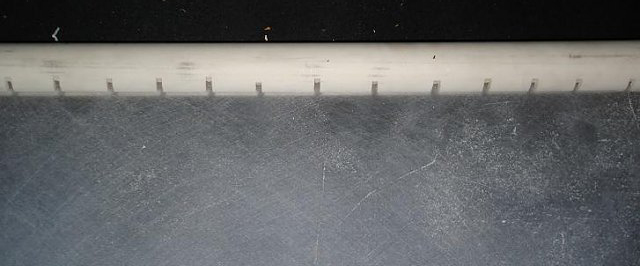 888-CORAL-REEF Filtering discussion: www.AlgaeScrubber.net |
santamonica Enthusiast Posts: 152 Kudos: 17 Registered: 19-Sep-2008   | Here are some more designs to give you more ideas: Freshwater: Delilah on the TA site: 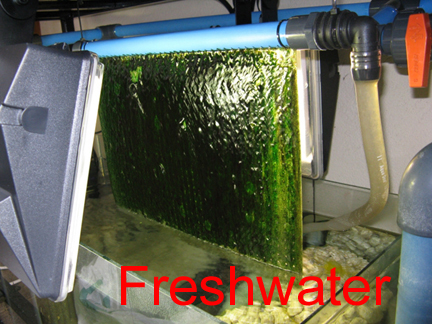 Freshwater: Hop2jr on the FL site: 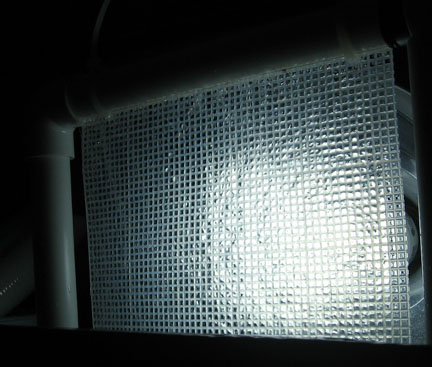 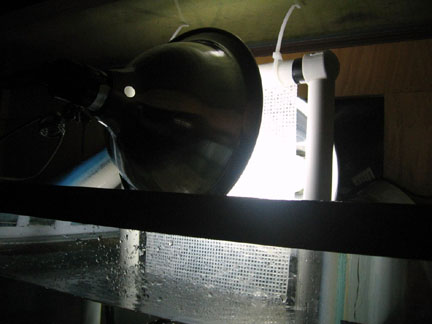 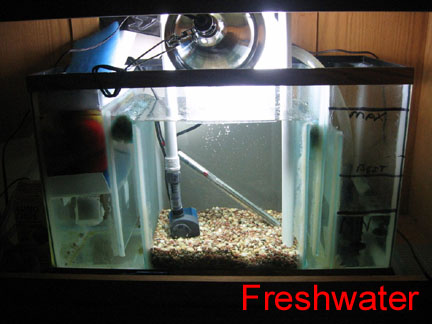 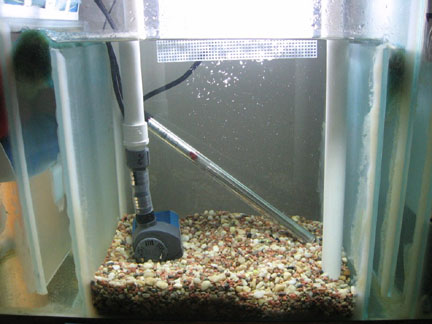 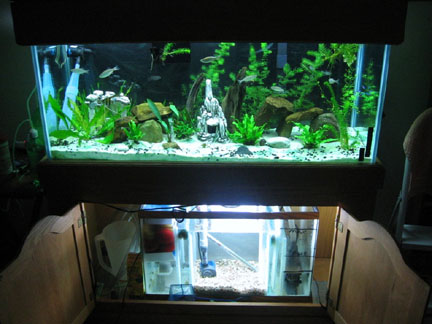 And the rest are saltwater: Adee on the SARK site: 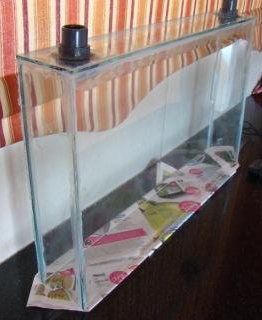 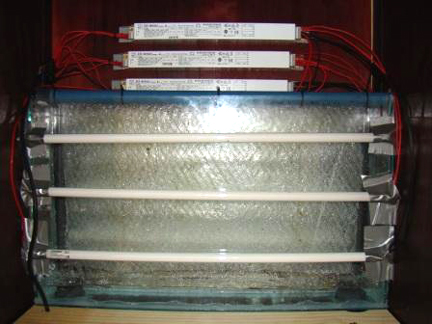 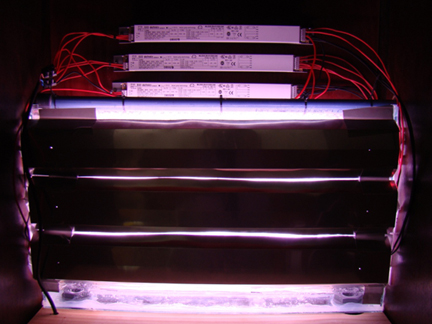 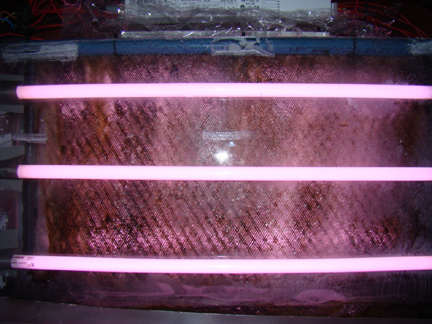 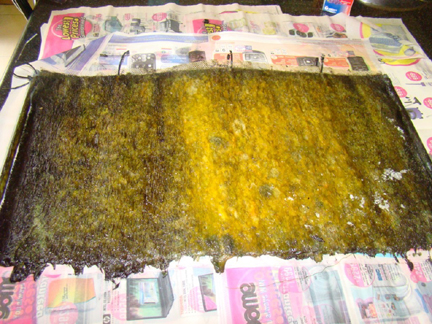 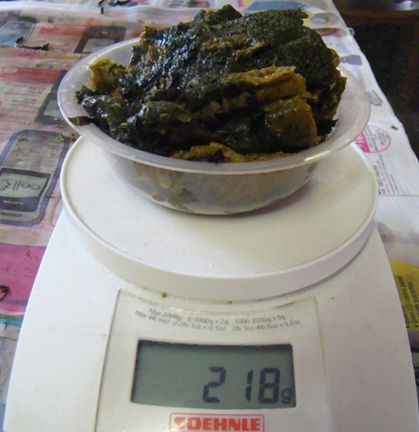 Amalick on the MASA site: 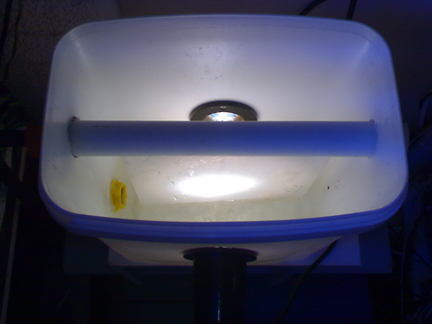 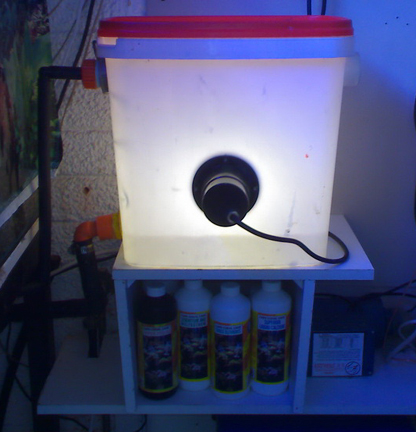 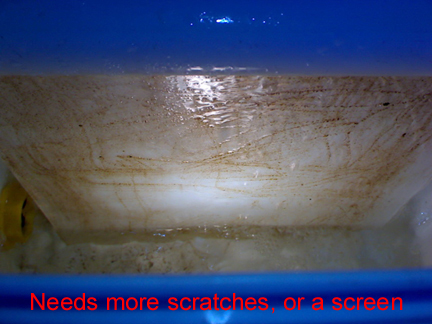 Andreas on the MASA site: 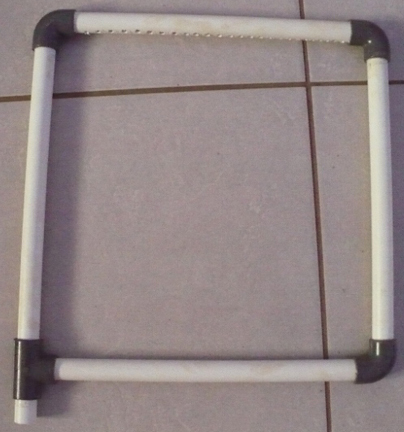 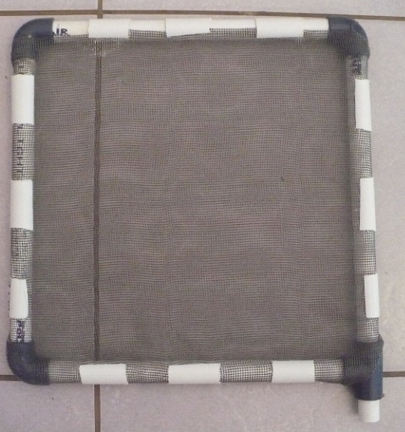 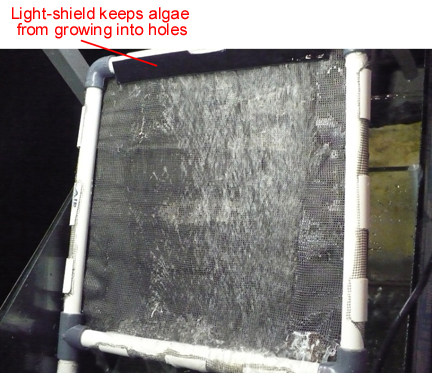 Andy on the FF site: 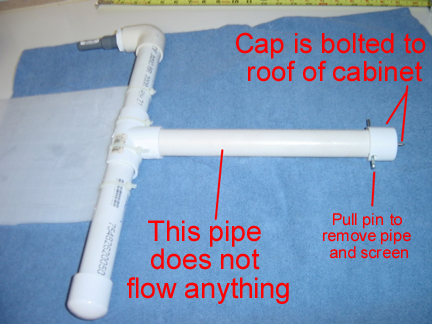 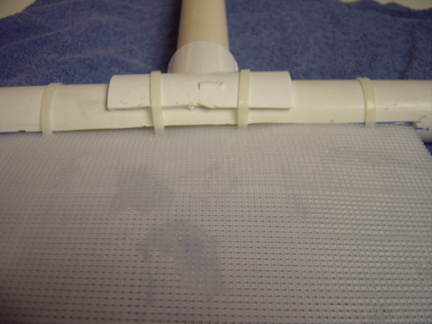 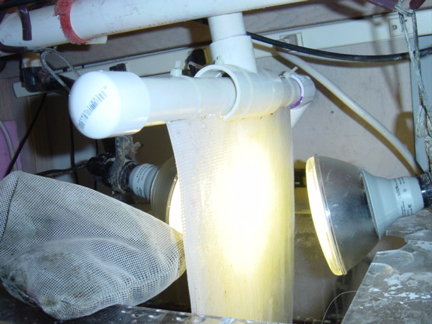 Azules27 on the spanish AR site: 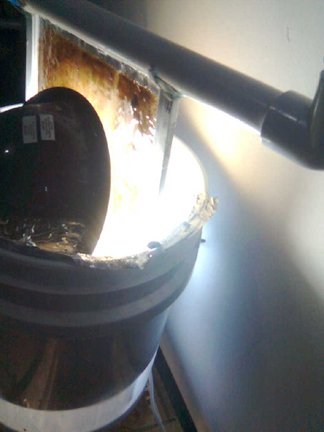 BalaShark on the MFT site: 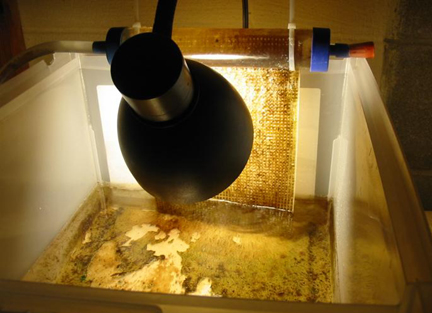 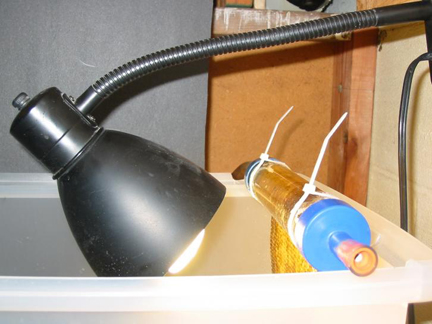 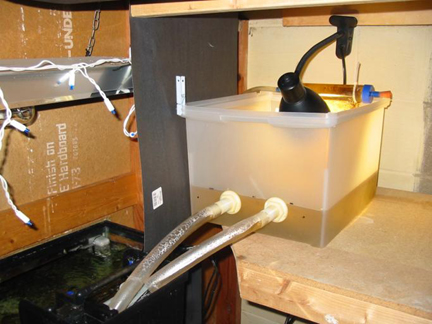 Beazalbob69 on the SWF site: 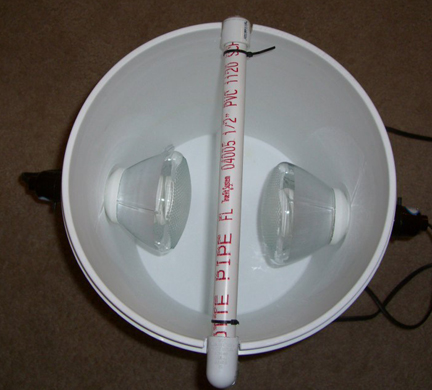 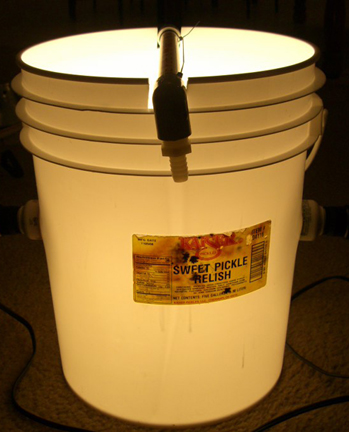 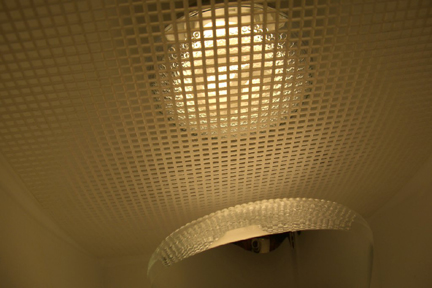 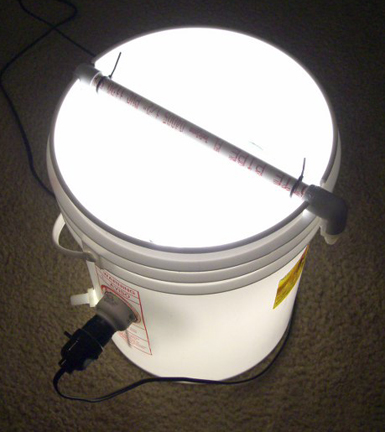 Bigploch on the LR site: 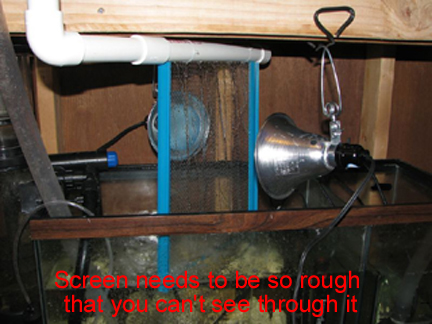 BigTanner on the RS site: 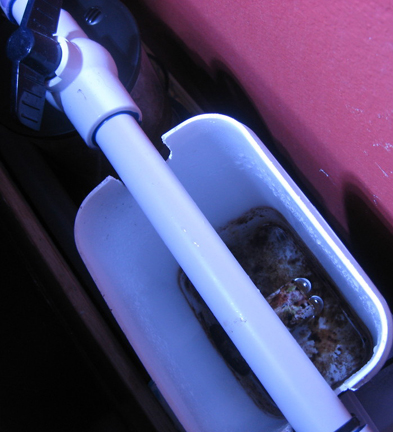 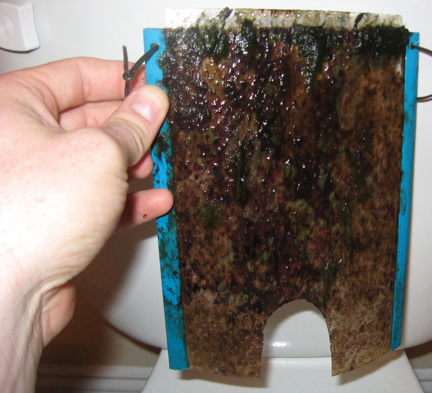 Bluespotjawfish on the RS site: 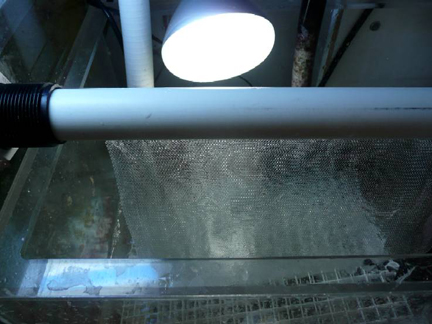 Brettb2020 on the MASA site: 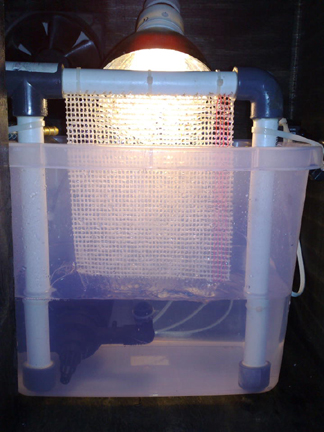 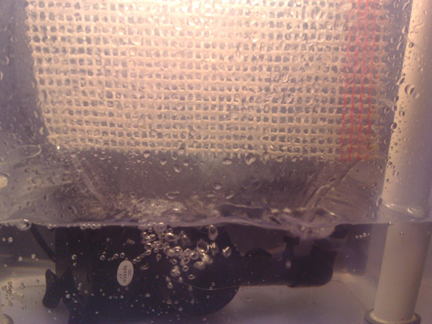 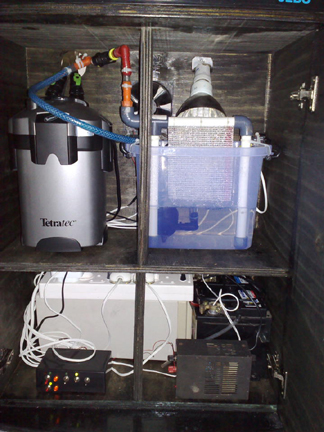 Cbrownfish on the RASOC site: 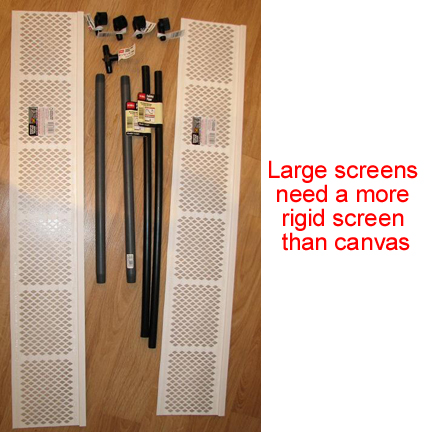 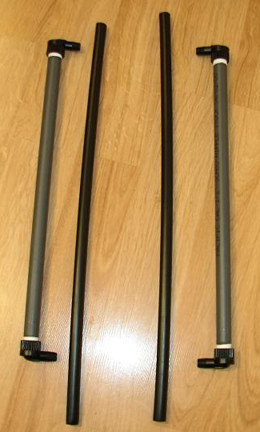 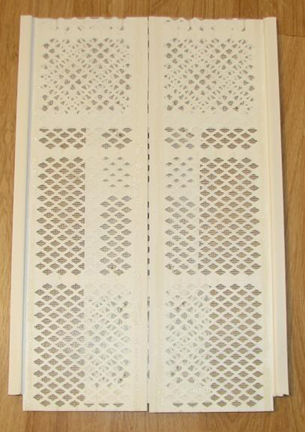 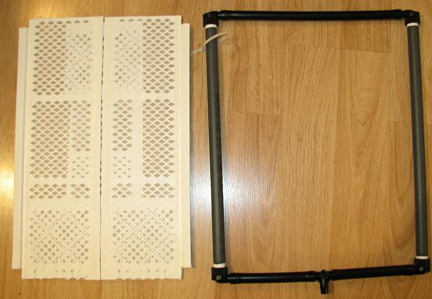 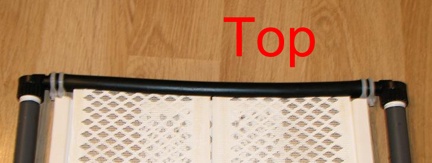 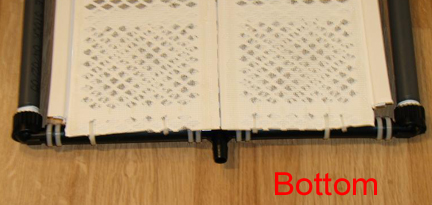 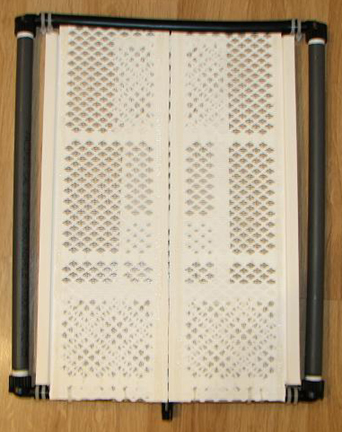 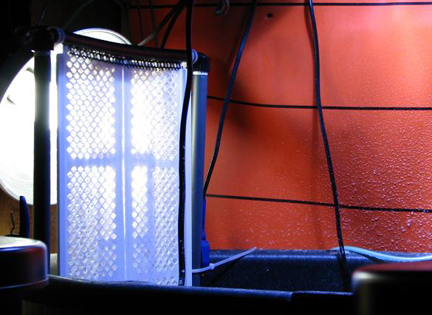 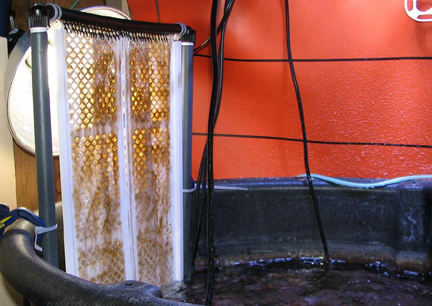 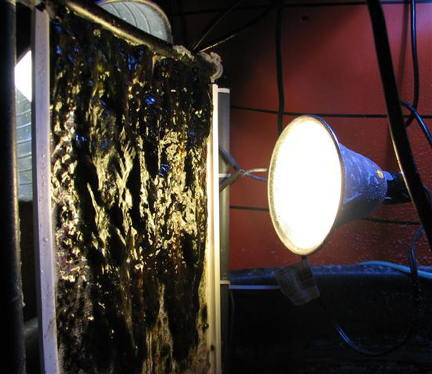 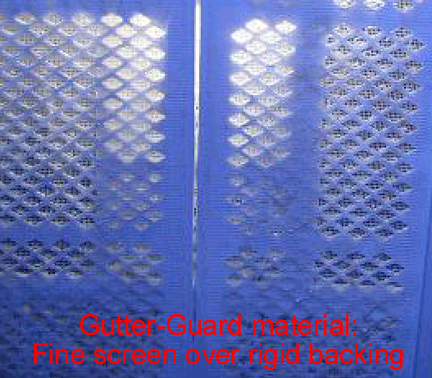 Christophe on the MD site: 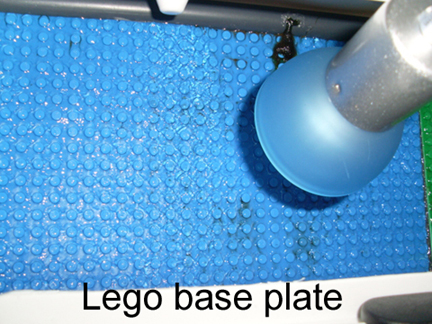 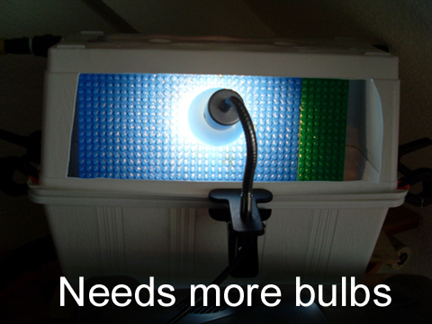 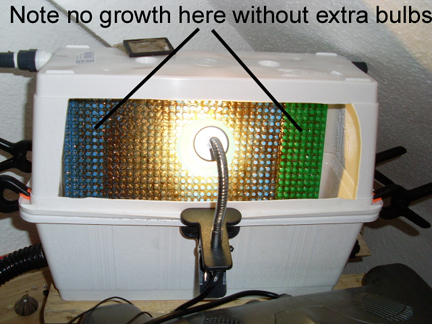 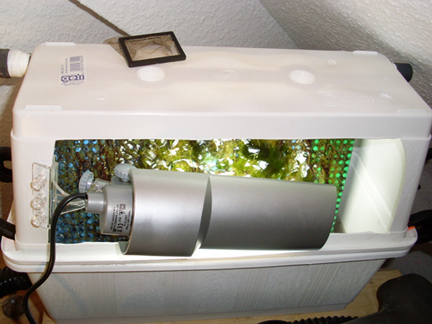 Chudly on the MD site: 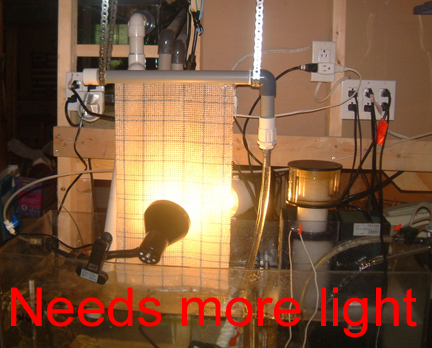 Cvermeulen on the MFK site: 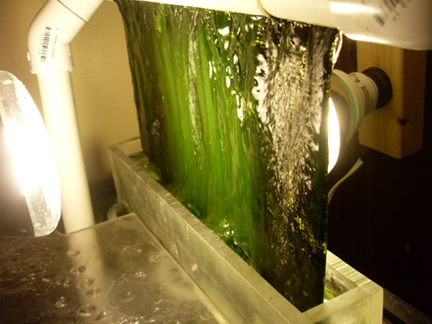 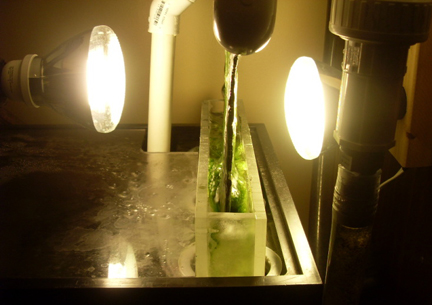 Cyberseer on the algae scrubber site: 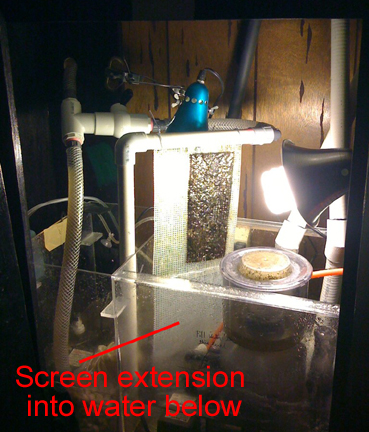 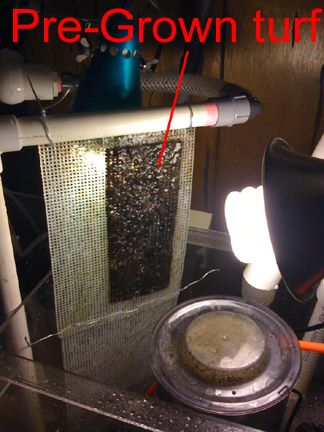 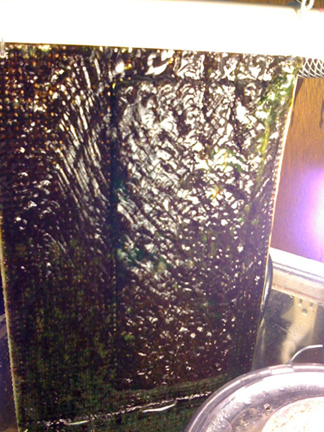 DangerDave on the MB site: 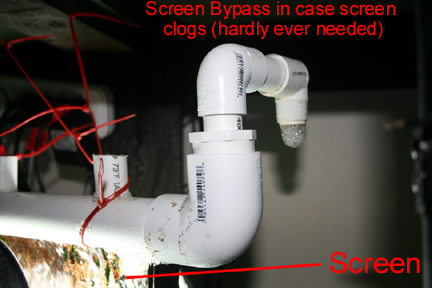 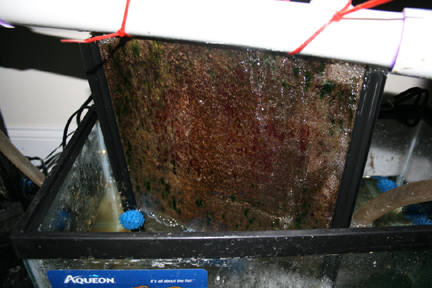 Darkblue on the RP site: 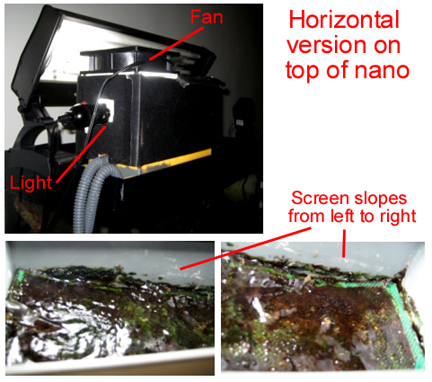 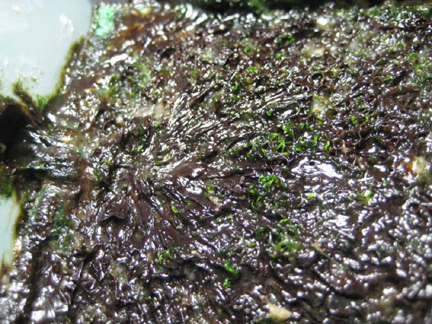 Dave3441 on the UR site: 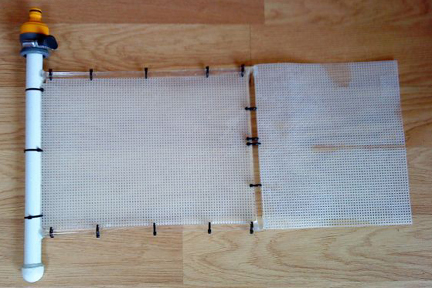 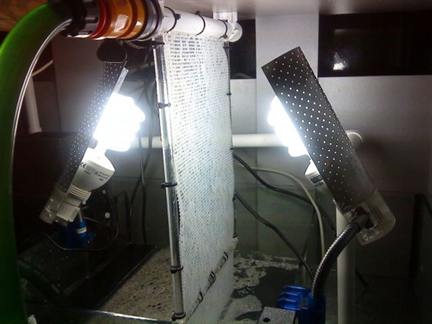 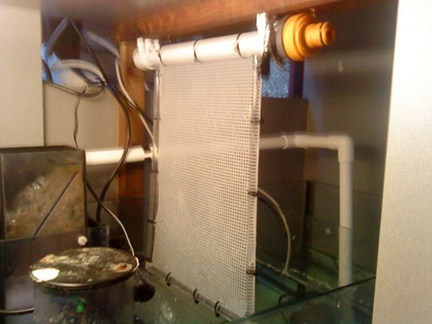 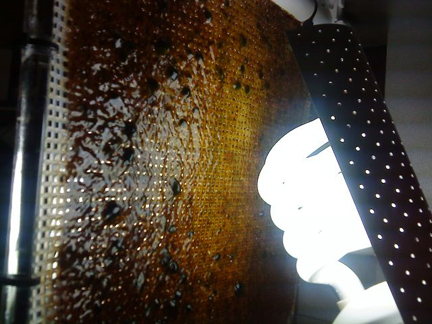 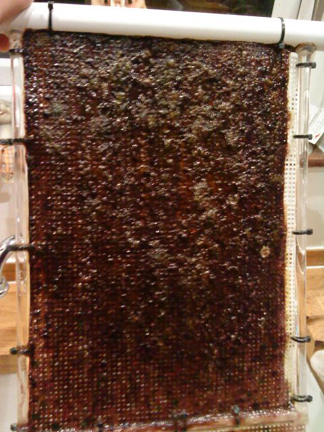 Dohn on the MASA site: 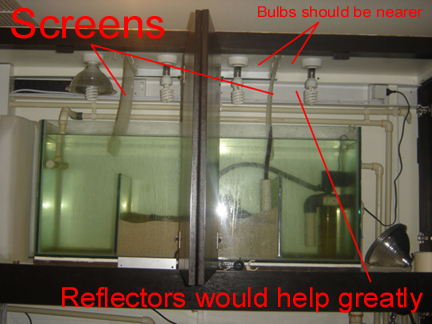 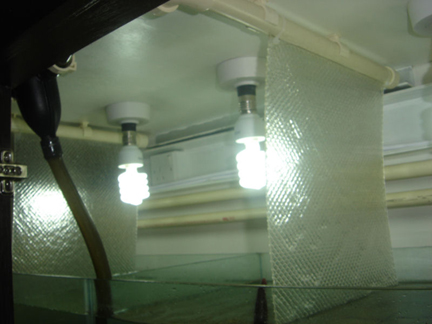 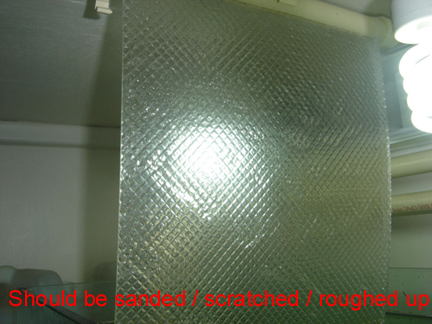 Drakken on the SWF site: 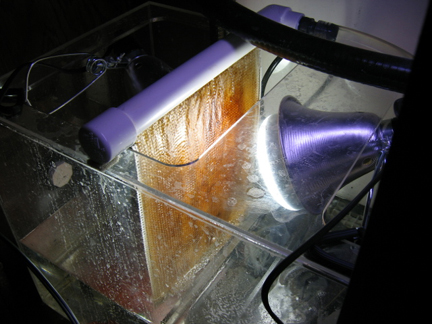 DrPepperSmith on the algae scrubber site; This is one of the non-nano horizontal designs that looks like it will work. Note that it is lifted above the water: 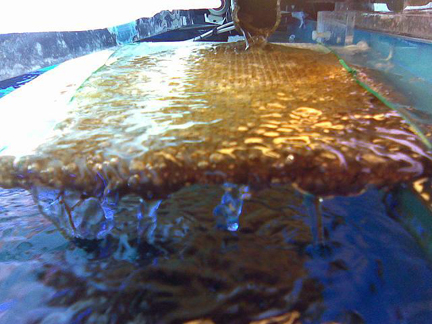 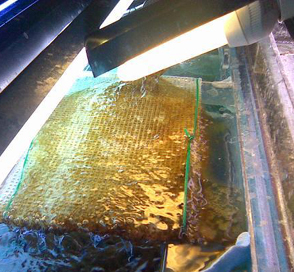 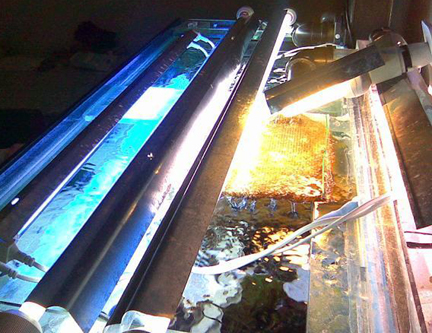 Emperador on the spanish AR site: 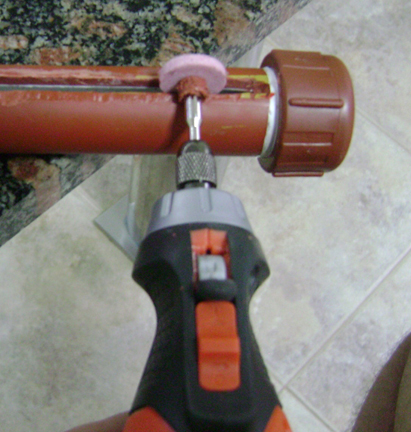  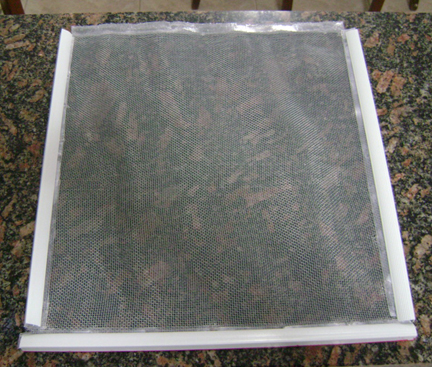 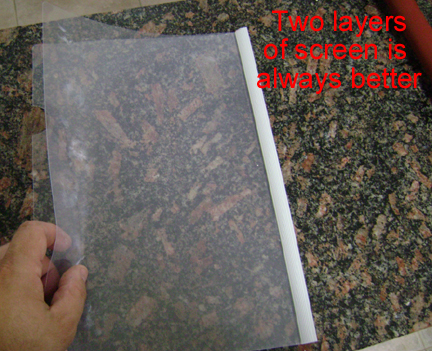 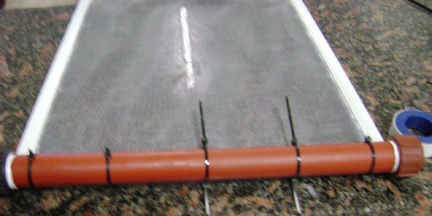 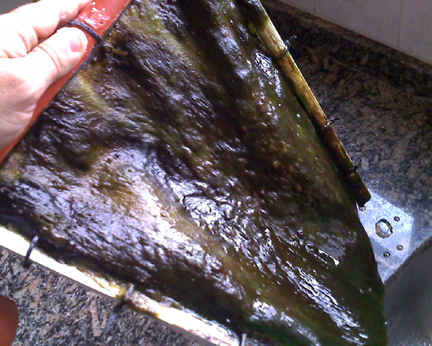 Enatiello on the RS site: 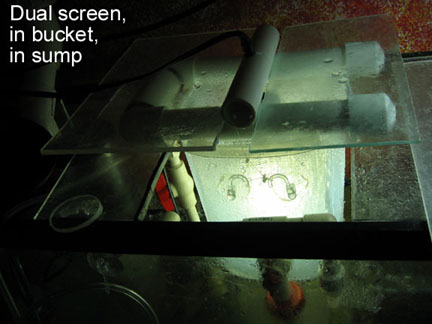 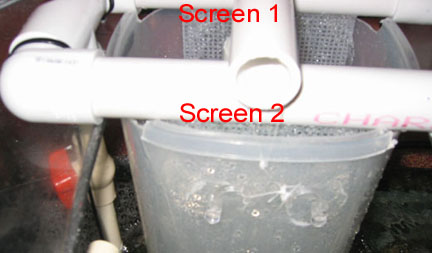 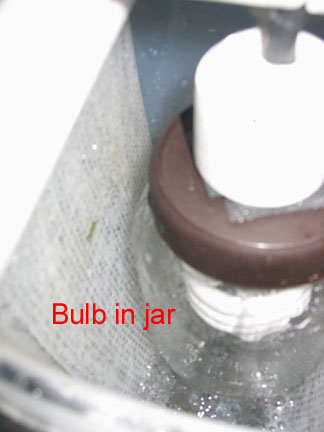 Gatorzone19 on the SWF site: 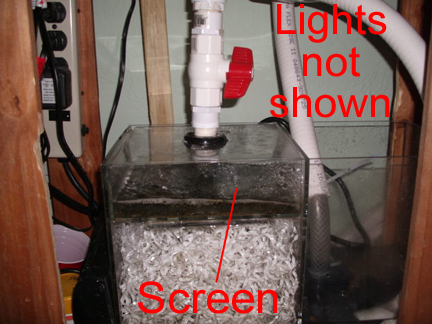 Gechav on the spanish AR site: 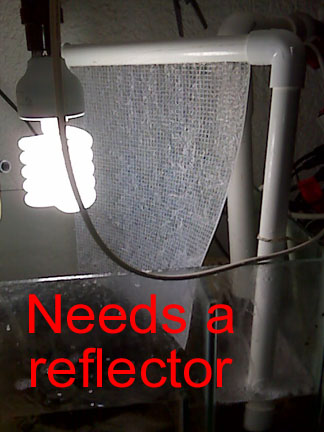 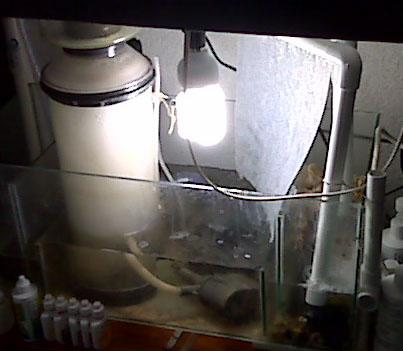 Glock339 on the UR site; This one is on the top of the display, and uses the display's MH: 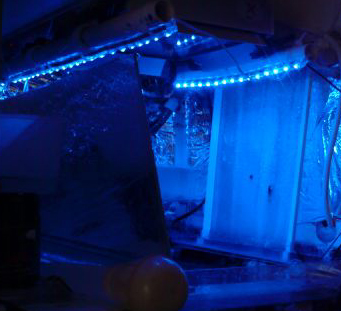 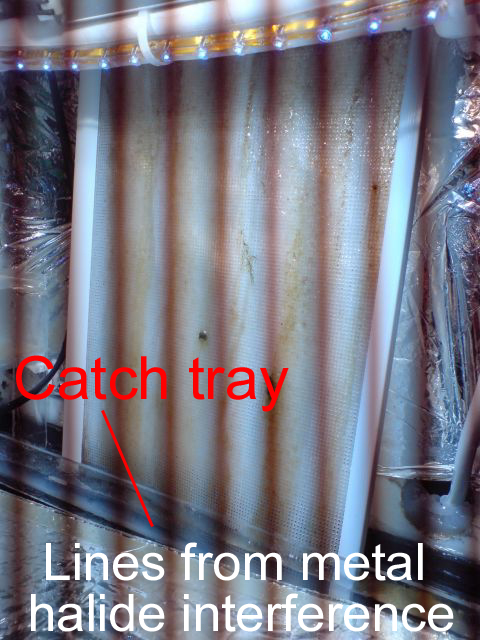 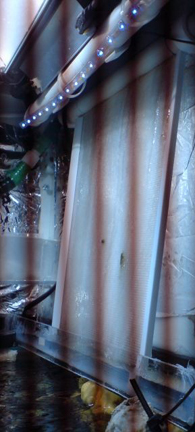 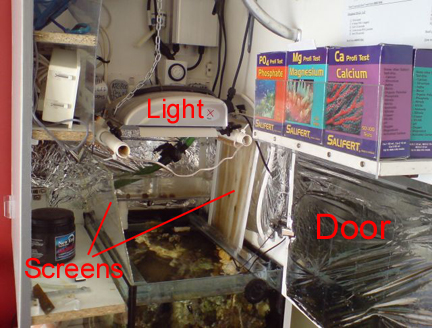 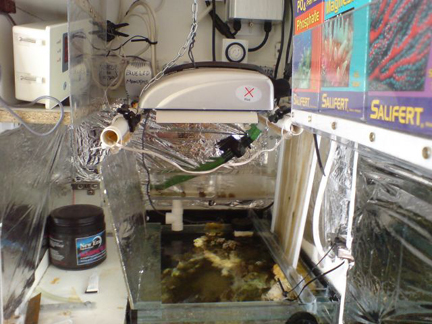 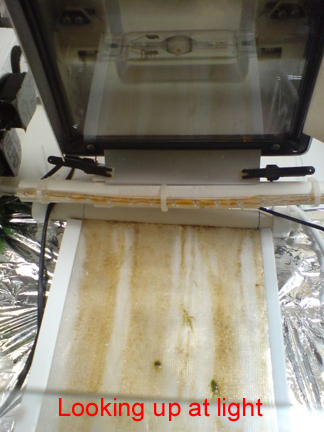 Iceman on the SG site: 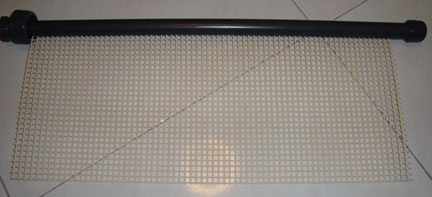 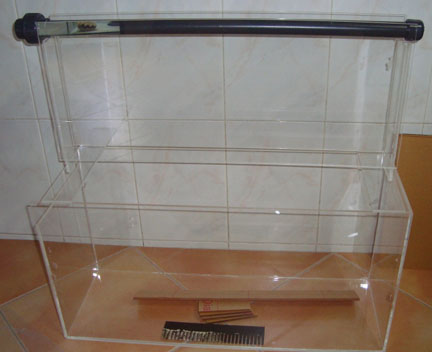 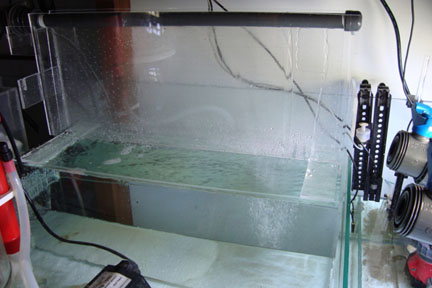 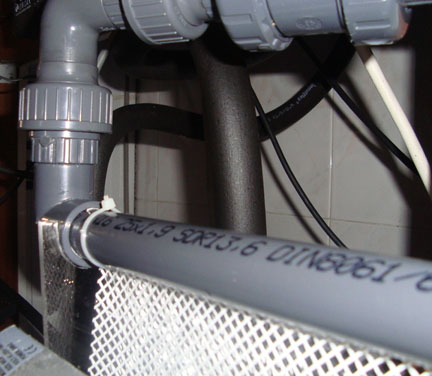 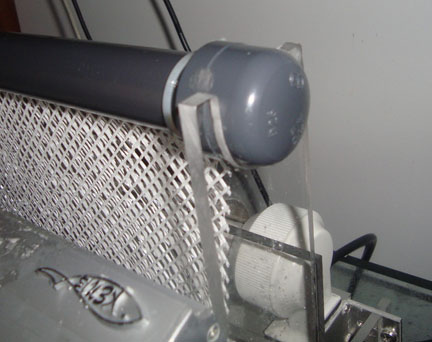 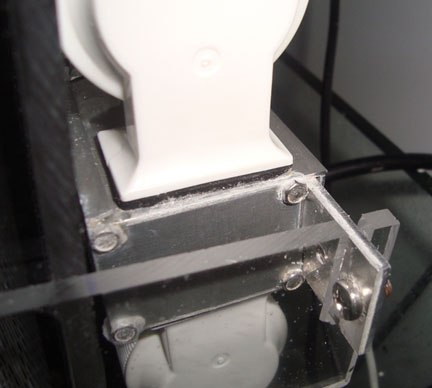 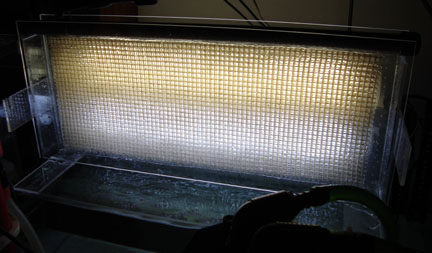 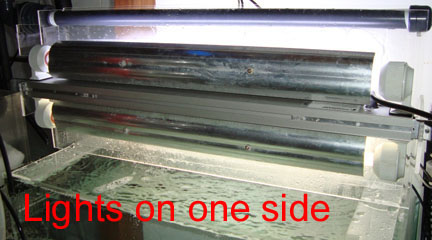 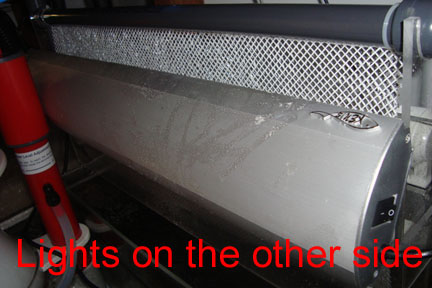 Ikarbary on the SARK site: 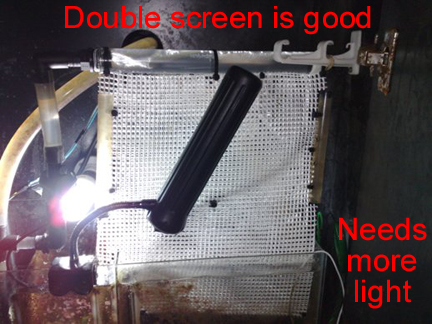 Jared on the RS site: 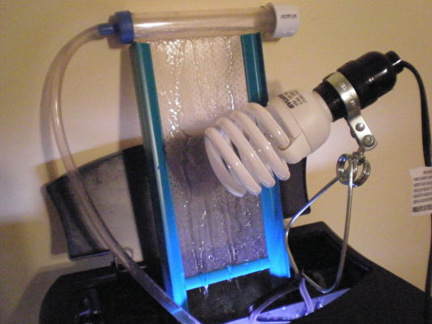 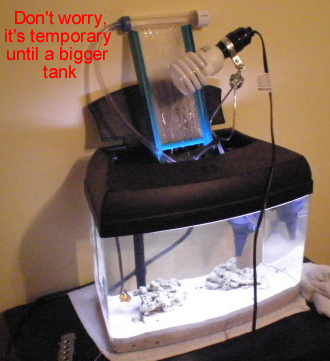 Jason on the spanish AR site: 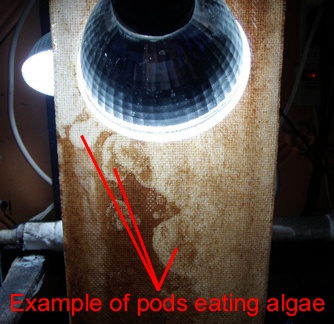 Joeyp on the RP site: 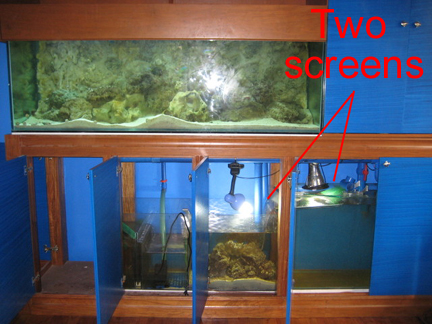 Johntanjm on the SG site: 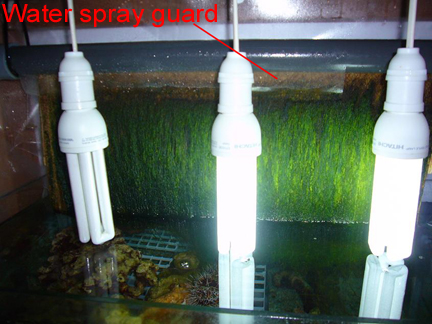 Jtremblay on the MD site: 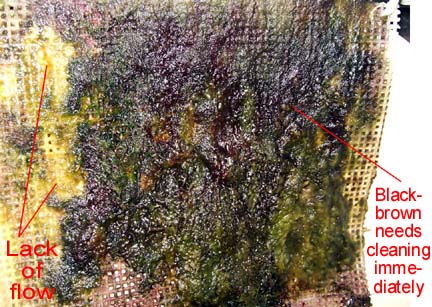 Juliovideo on the spanish AR site: 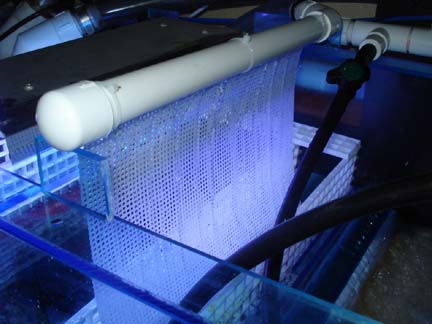 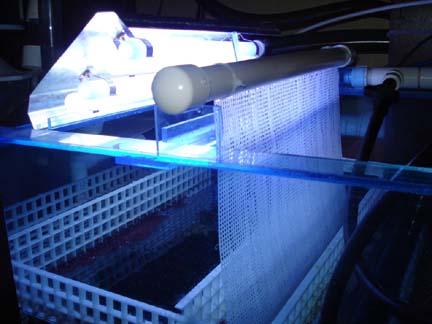 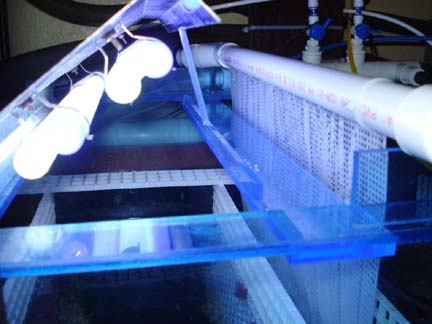 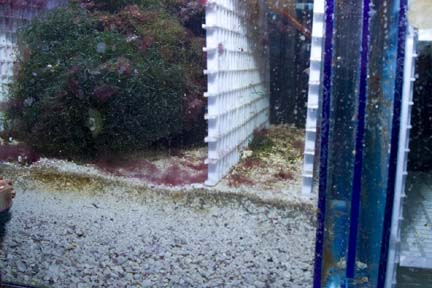 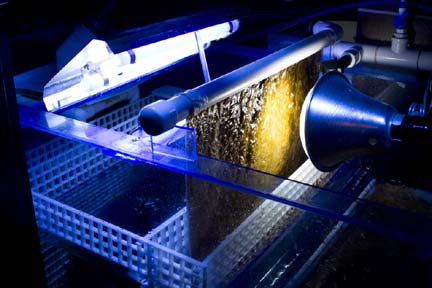 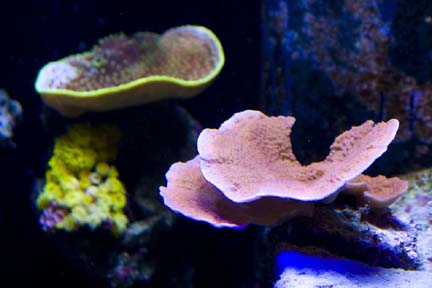 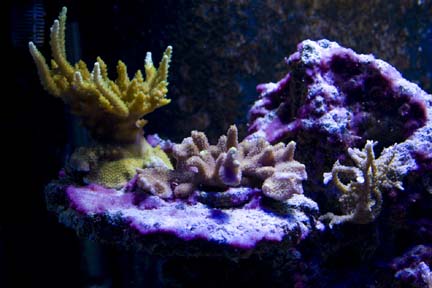 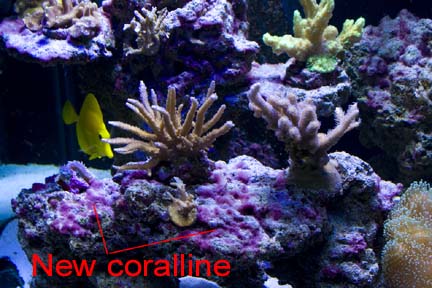 K+n_vts on the UR site: 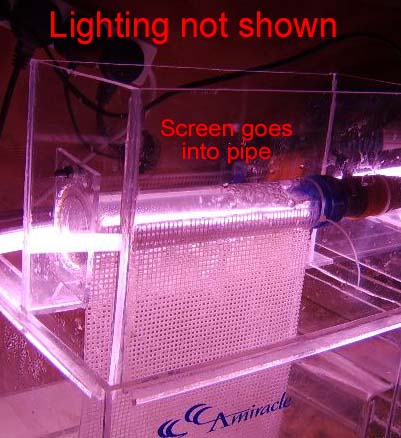 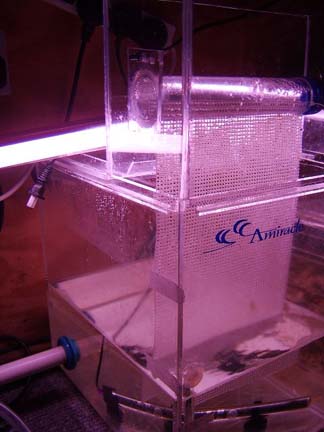 UserKeithtty on the algae scrubber site: 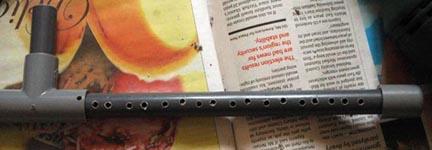 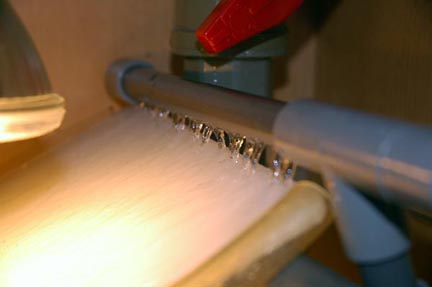 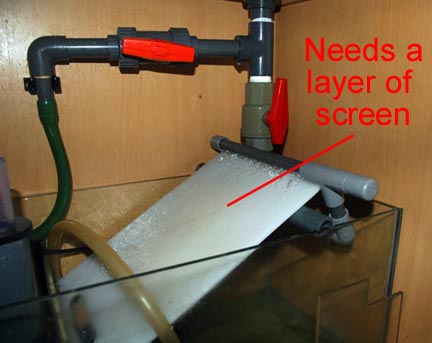 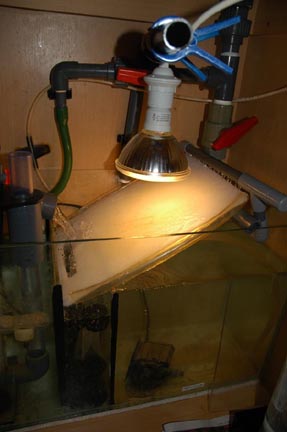 Khawyc on the MD site: 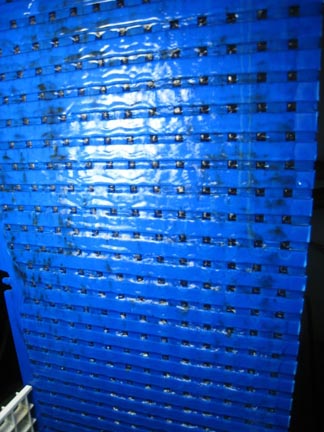 Lance126 on the RP site: 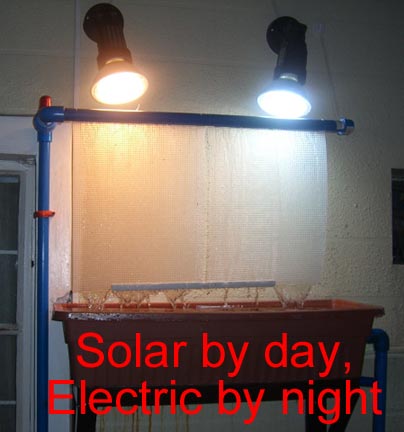 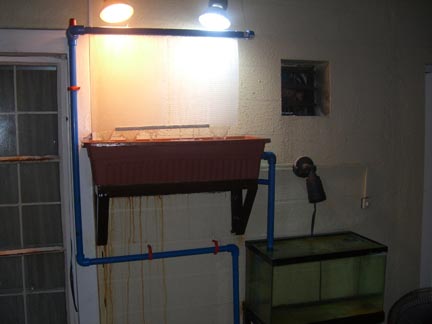 Leochngyh on the MD site: 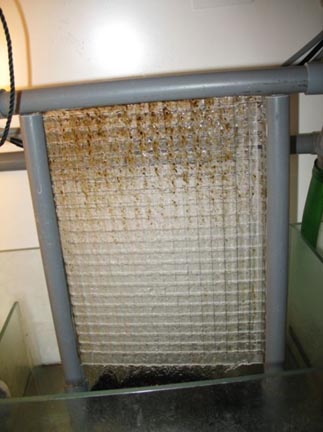 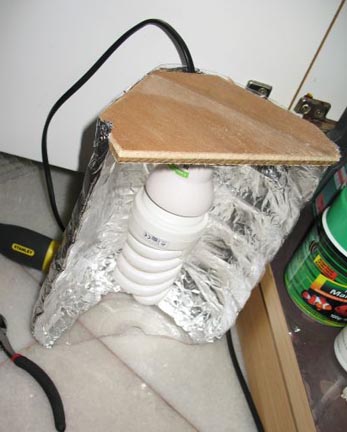 LethargicCoder on the MB site: 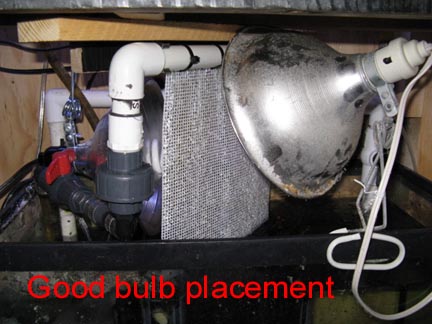 Lxa783 on the RASOC site: 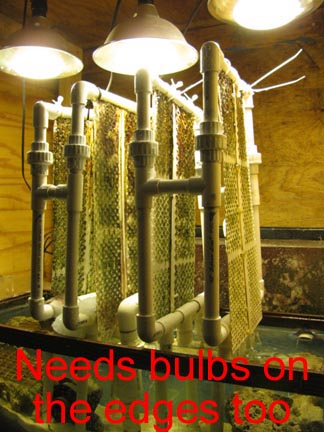 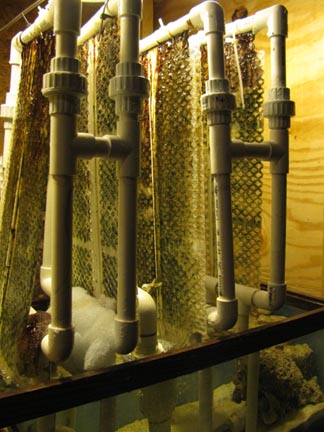 Madeley on the algae scrubber site: 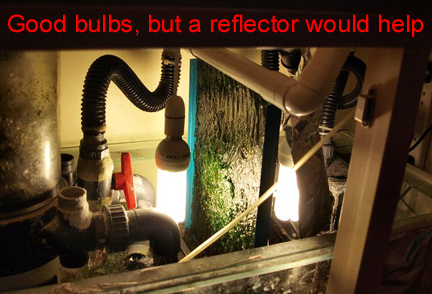 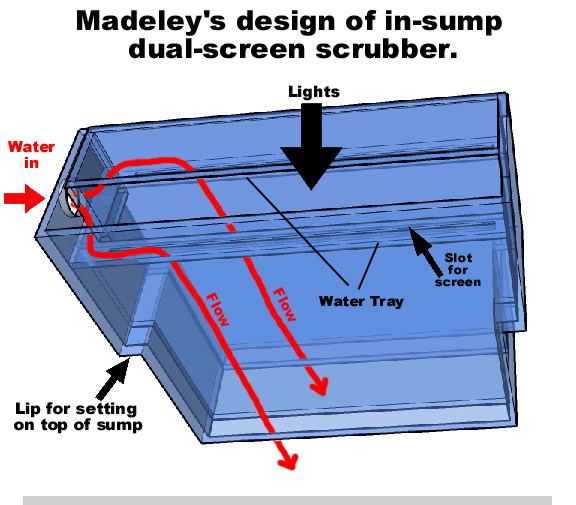 Majorjoey on the FR site: 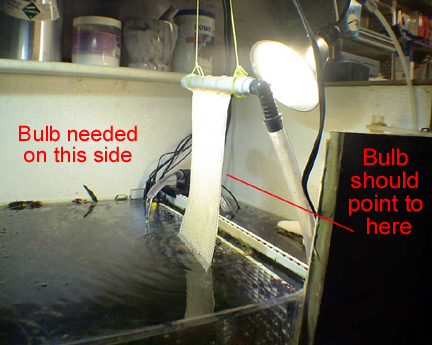 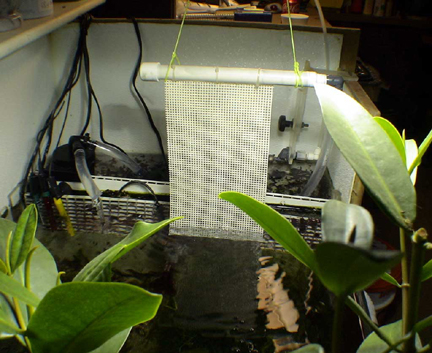 Manuelink on the spanish AR site: 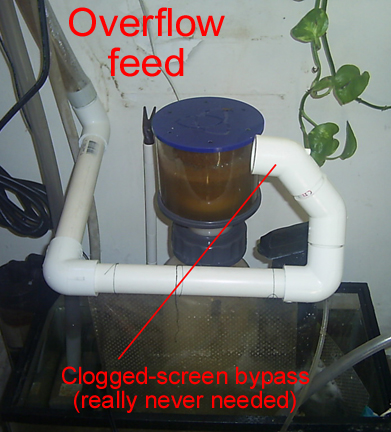 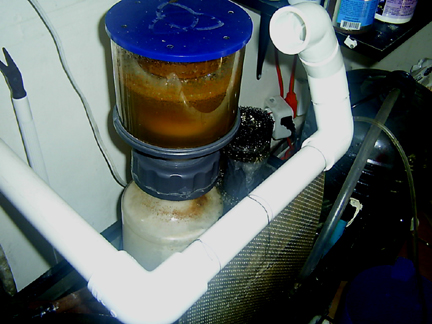 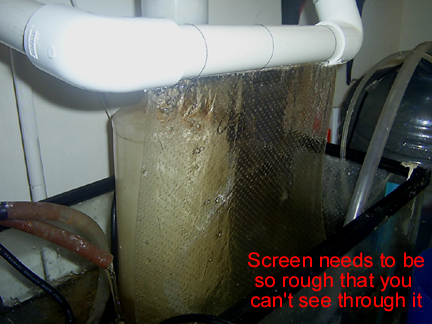 MikeBushie on the MASA site: 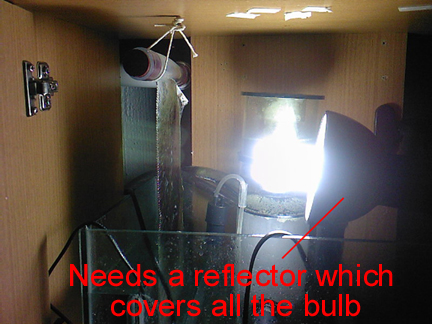 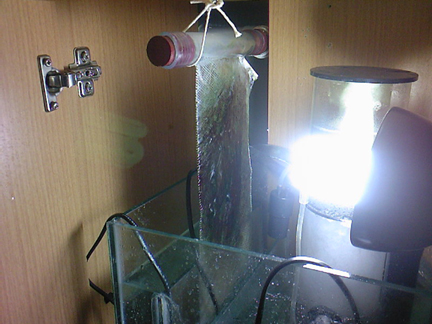 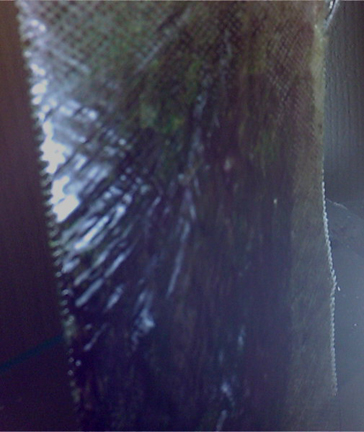 MJM on the SARK site: 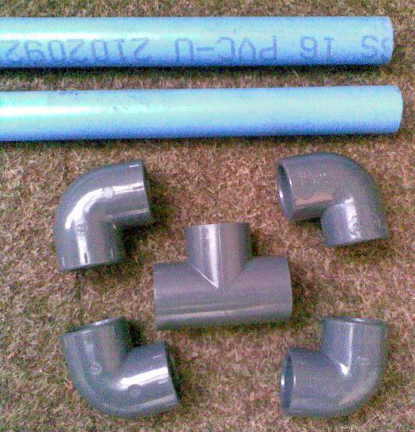  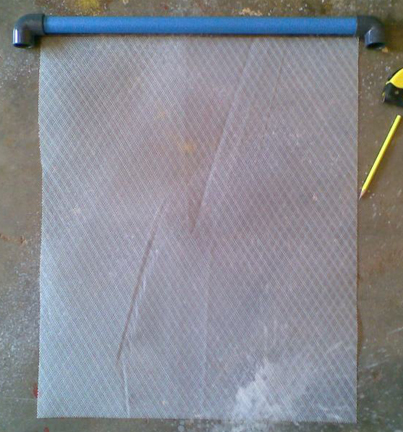 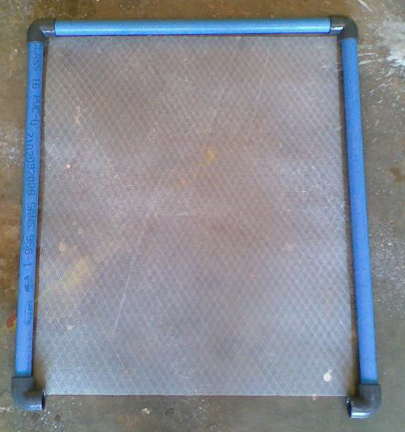 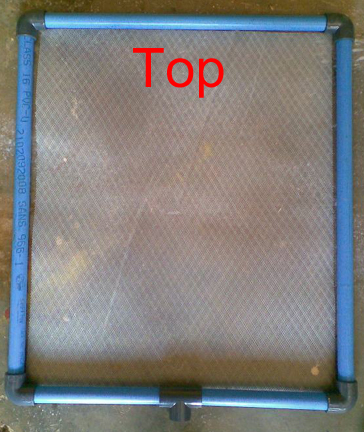 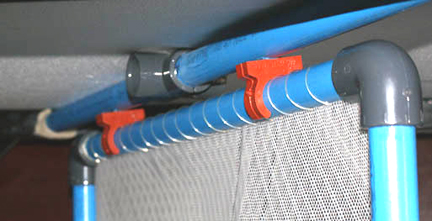 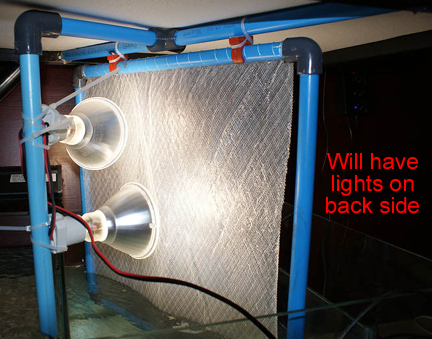 Murfman on the SCMAS site: 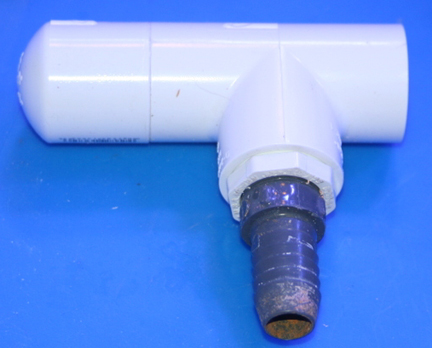 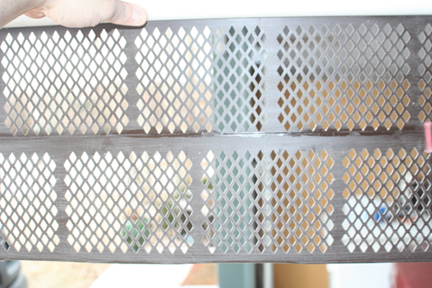   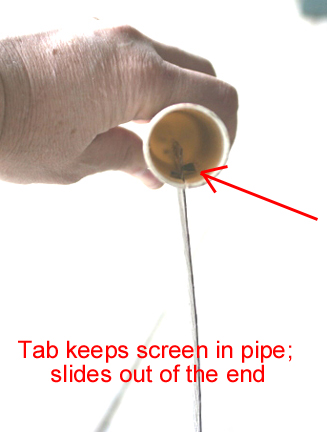 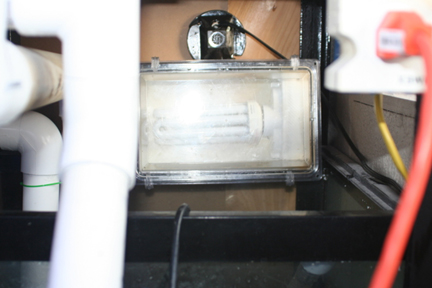 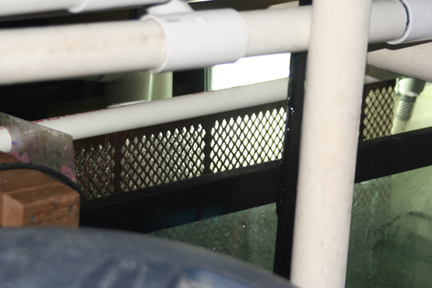 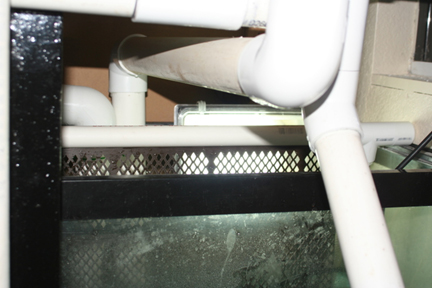 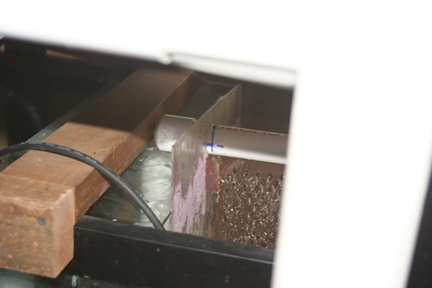 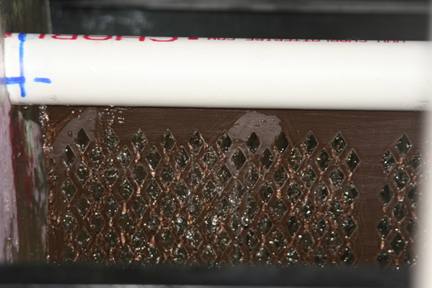 NM983 on the algae scrubber site: 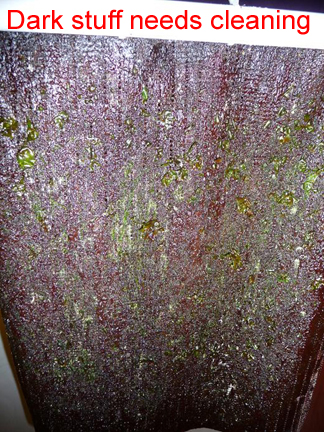 OceanParks on the MFT site: 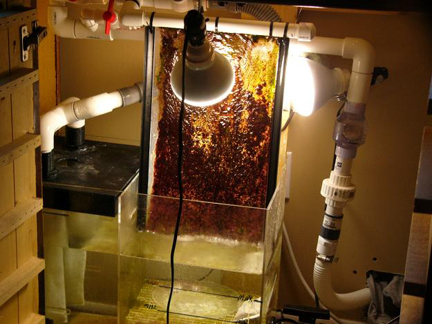 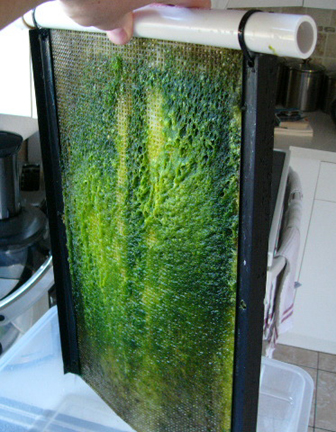 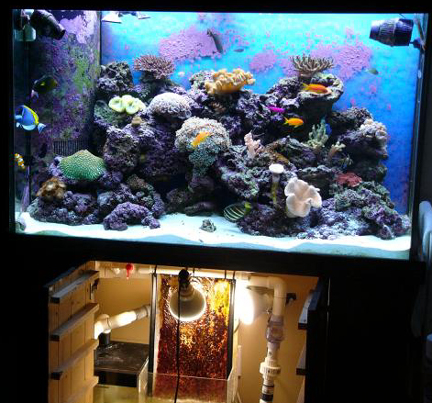 Oil_Fan on the FL site: 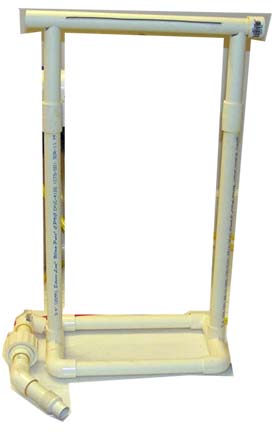 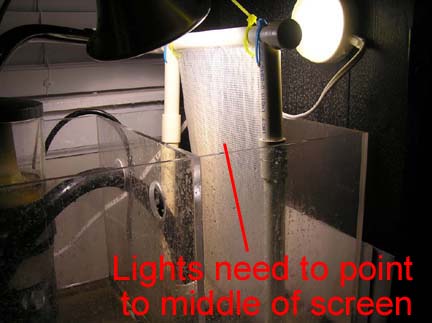 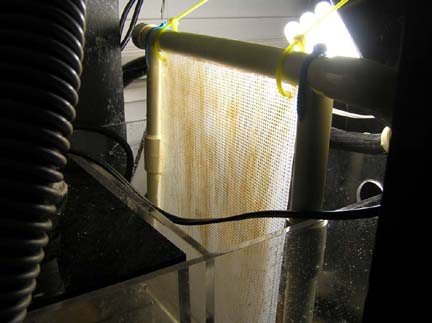 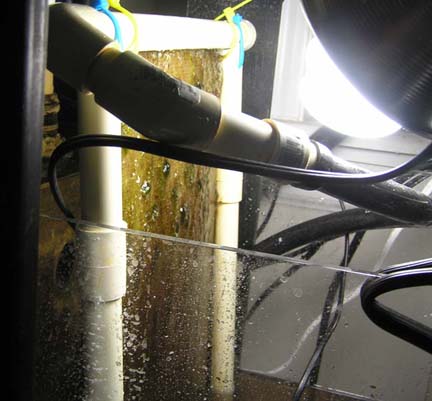 Reefski on the MD site: 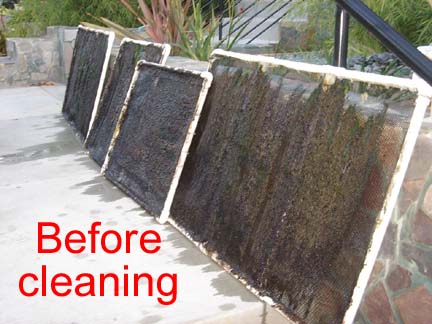 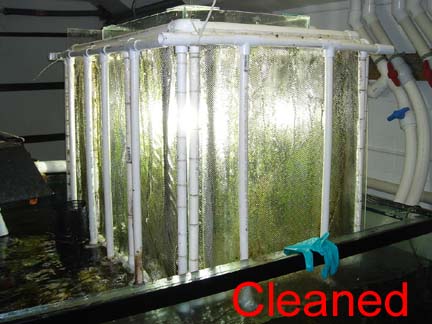 RentalDeceptionist on the UR site: 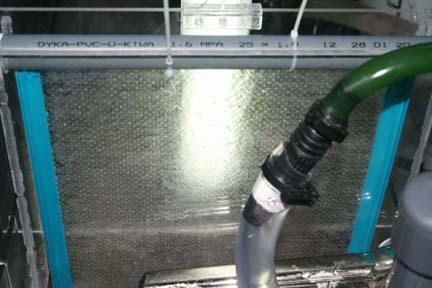 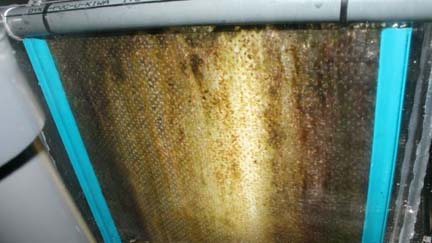 Riaanp on the MASA site: 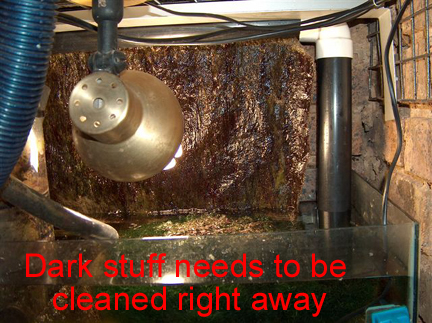 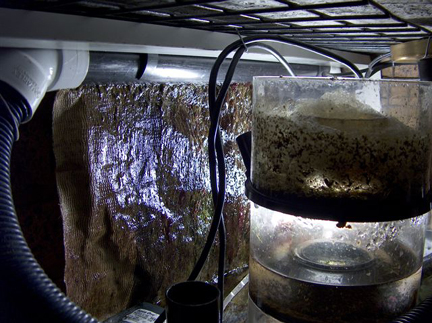 SaltCritters on the TR site: 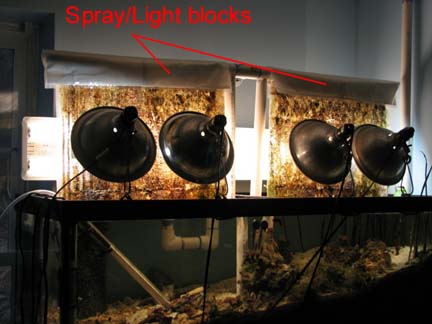 Scruffels on the MASA site: 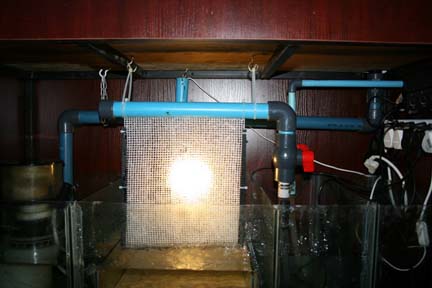 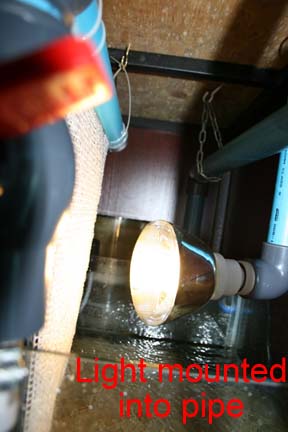 Sean48183 on the SWF site: 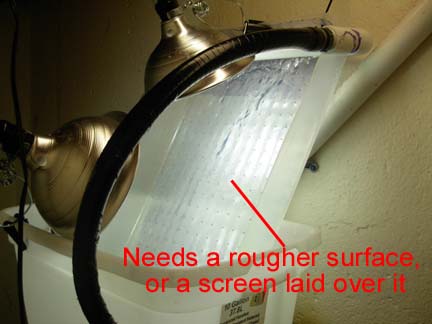 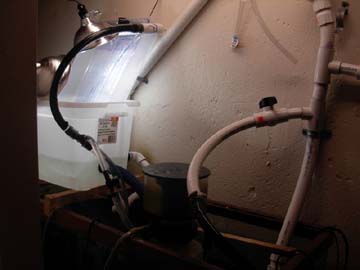 Sims on the SARK site: 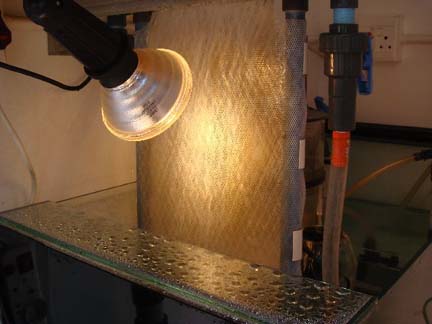 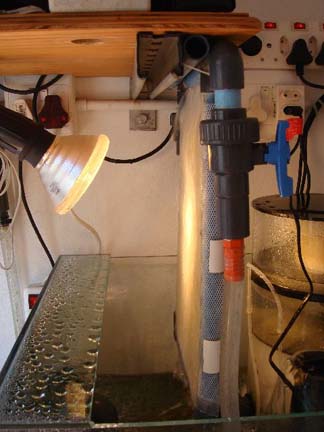 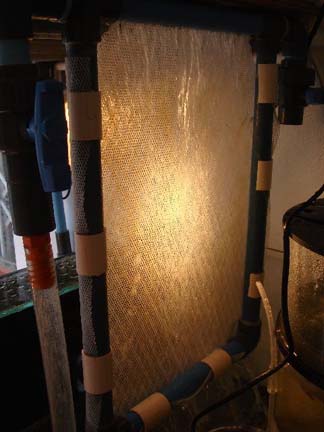 Skunkbudfour20 on the RC site: 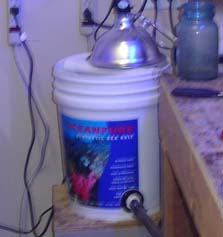 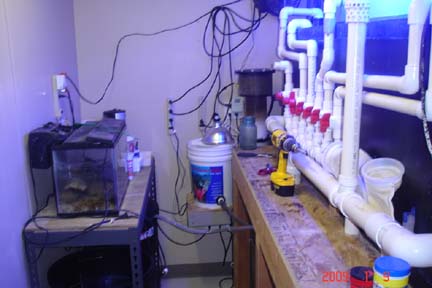 SoCalJim on the MD site: 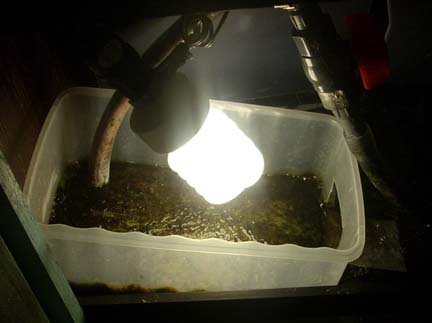 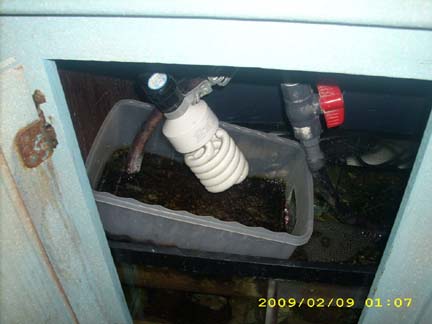 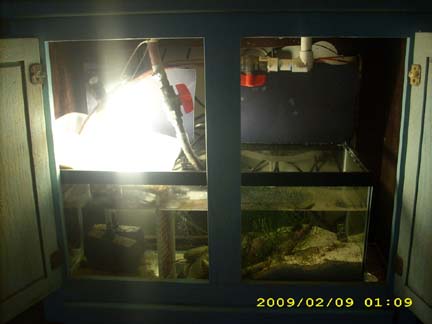 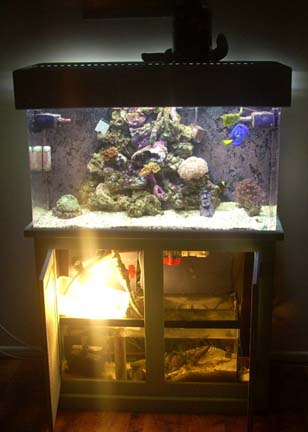 Spanko on the SWF site: 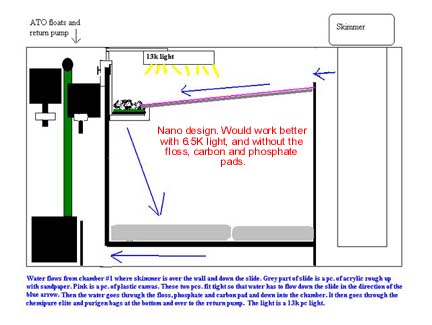 Stevenkoh08 on the SRC site: 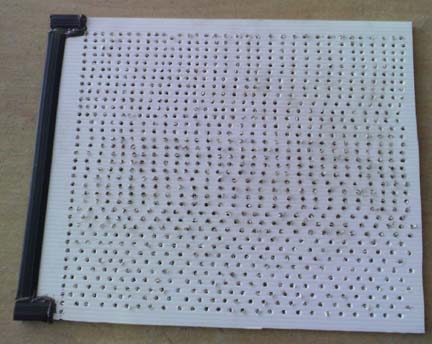 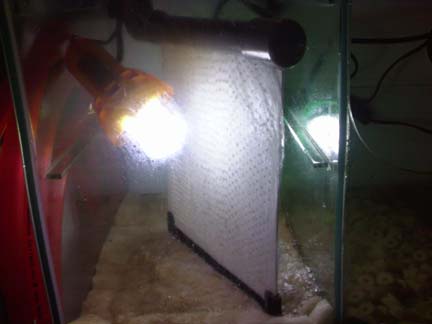 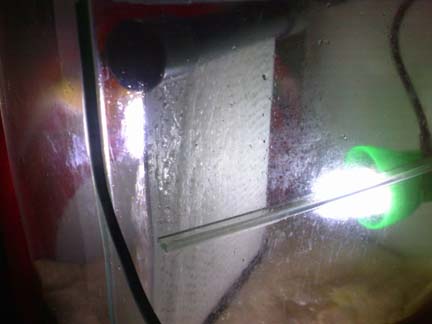 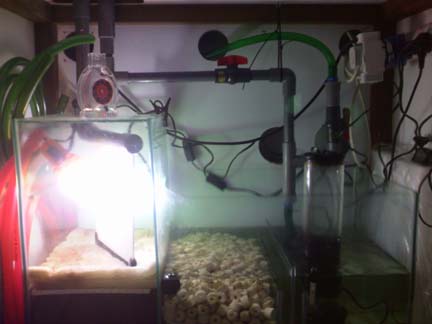 Weylin on the MFK site: 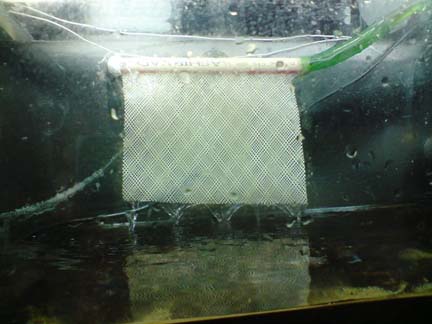 Wolfpak on the RP site: 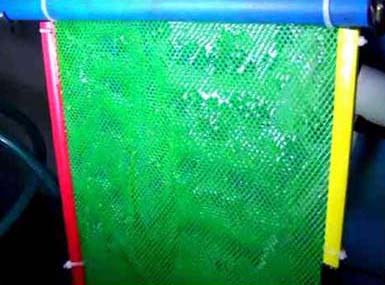 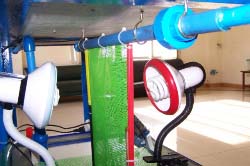 End pics 888-CORAL-REEF Filtering discussion: www.AlgaeScrubber.net |
santamonica Enthusiast Posts: 152 Kudos: 17 Registered: 19-Sep-2008   | Part 5 of 7: "The Food of Reefs, Part 5: Bacteria" by Eric Borneman http://www.reefkeeping.com/issues/2003-01/eb/index.php "Given the enormous bacterial biomass in all ecosystems, it should be of little surprise that [bacteria] are food for something, if not many things. Bacteria, being composed of living material, contain a relatively large amount of nitrogen, an element in very short supply in coral reef waters. "The biomass and productivity of bacteria on [natural] coral reefs are as great as those in nutrient-enriched (or eutrophic) lakes, and up to a hundred times greater than in the open ocean. Planktonic bacteria in coral reefs [..] have filamentous processes to allow them to absorb and consume dissolved organic molecules [DOC]. "In virtually all studied marine environments, bacteria are water purifiers, decomposers of organic material, and a primary source of protein for both those animals that directly graze on them and those that acquire them indirectly through secondary consumption. "Given the importance of bacteria as a food source in marine ecosystems, it might not be surprising to learn that they are also a primary food source for corals. It has been found that bacteria alone can supply up to 100% of both the daily carbon and nitrogen requirements of corals. All corals studied consume dissolved organic material [DOC], bacteria, and detrital material [waste]. "Bacteria not only provide carbon and nitrogen for the [coral] polyp, but also provide an important source of phosphorous for the zooxanthellae, in addition to other elements such as vitamins and iron. "Bacteria exist in very high diversity and biomass in the marine environment, and especially on coral reefs and on coral surfaces. They play critical roles in virtually all ecological processes that control reefs, and are a major component of food webs. Corals feed on bacteria at levels and efficiencies that rival all other bacterial consumers. 888-CORAL-REEF Filtering discussion: www.AlgaeScrubber.net |
santamonica Enthusiast Posts: 152 Kudos: 17 Registered: 19-Sep-2008   | Successes of the Day: Johnt on the UR site: "I feed heavy and don't do water changes, so there's quite a bio load to balance; since adding the scrubber I've stopped using phosphate remover, and levels remain low and the water appears clearer, but I think the biggest difference has been how clean the tank looks despite being set up close to five years." tarraza on the algae scrubber site: "the only thing that i can tell you guys is that this is my 5 months that I have NOT change any water in my 30 gal salt watwer tank full of hard corals, soft corals etc. For more than 8 YEARS i spend a LOT of money on additives to eliminate nitrates above 30ppm, phophate way over 20 not to mention water change every other week just to get partial results. Now I do not even test for nitrates, phopate, I only test one in a blue moon for calcium, ph, and alk. My filtration for this tank is a ACUACLEAR 110 FILTER ON THE BACK OF MY TANK WHITH MY VERSION OF ALGEA SCRUBBLE (of course whith ALL the ADVICES FROM ST. MONICA in). People KEEP IT SIMPLE. THIS SYSTEM REALY WORK. cyberseer on the algae scrubber site: "YEAH!! Tested this morning coz i was bored, got a 0 NO3 reading, had to double and triple the test, to confirm that I wasn't dreaming/sleep walking/imagining things. Like that presentation says, this has got to be one of the happiest days of my life in this hobby/dark hole. Also, I can answer my question per title of this thread now. It took 50 days to see effect (could be sooner, but I didn't test for like a week and half before yesterday) and 51 days to result.  What a beautiful day it is, no rain, and no NO3. No skimmer for almost 4 weeks. No water change for 2 weeks. Feed 2x a day for the fish, 1 cube a day for the fish and softies. BTW, changed a bigger CFL on 2/16/09, it's now a 65W with output of 300w. Big difference in growth." What a beautiful day it is, no rain, and no NO3. No skimmer for almost 4 weeks. No water change for 2 weeks. Feed 2x a day for the fish, 1 cube a day for the fish and softies. BTW, changed a bigger CFL on 2/16/09, it's now a 65W with output of 300w. Big difference in growth."brianhellno on the MFK site: "I've had a scrubber set up on my Piranha tank for a few months now and Nitrate has been zero every time I've tested it. At first the scrubber grew huge amounts of this brown grease-like algae, and now it just has a slow steady growth of solid green. I clean it about once a week or whenever the green algae starts to look like its getting a little too dense. I wanted to test the ability of the scrubber to see how well it handles a worst case scenario. I didn't change out the water for a week (the longest ever) and I left in uneaten food that made its way to the bottom of the tank. At the end of the week 0 ammonia 0 nitrite and only 5 PPM Nitrate. Simply amazing. I'm not quite sure why I change the water out anymore." 888-CORAL-REEF Filtering discussion: www.AlgaeScrubber.net |
santamonica Enthusiast Posts: 152 Kudos: 17 Registered: 19-Sep-2008   | Update: Electrical Safety Be sure to seal your bulbs and connections with aquarium-safe silicone or sealant, especially if the bulb is down inside the sump. You can't see it, but there will be tiny amounts of salt spray that will build up where you screw the bulb in, and also where you made electrical connections. When the buildup gets thick enough, it will short out and blow a fuse. So each time you replace a bulb, re-seal it. You should be able to pour water over it without it causing a problem. 888-CORAL-REEF Filtering discussion: www.AlgaeScrubber.net |
santamonica Enthusiast Posts: 152 Kudos: 17 Registered: 19-Sep-2008   | Update: Builders Scrubber builders are needed, because many folks on different forums are wanting to try a scrubber, but they don't want to (or can't) build them. So if you are available to build a scrubber of any kind (sump, bucket, acrylic, LED, etc), pm me and I'll put you in the builder databa 888-CORAL-REEF Filtering discussion: www.AlgaeScrubber.net |
santamonica Enthusiast Posts: 152 Kudos: 17 Registered: 19-Sep-2008   | Update: Sideways Spray Protection If you think there may be times when you cannot clean your screen on time (at least once a week), you may want to protect it from sideways spray. Sideways spray can sometimes happen if you let the algae continue to grow up into the slot. The easiest protection is when you clean it; clean the part at the top, about a half inch (13mm) away from the slot, very thoroughly. Don't leave any algae behind at all. This way the algae will take longer to get thick here. You will lose a bit of filtering, but it won't sideways-spray as soon. Also, clean every bit of algae out of the slot/pipe, for the same reason. The other solution is to attach solid or flexible plastic strips to the side of the pipe, which will stop any spraying. And ideally, the strips should block light too, so that nothing grows into the slot in the first place:   888-CORAL-REEF Filtering discussion: www.AlgaeScrubber.net |
santamonica Enthusiast Posts: 152 Kudos: 17 Registered: 19-Sep-2008   | Update: CFL Reflectors When I see a regular CFL bulb (not a floodlight) being used, I always say that it needs a reflector. Although it would just be easier to use CFL floodlight (which does not need a reflector), below are some reflectors you can use with regular CFL bulbs. You can find many others by searching for "CFL reflector", or by going to any hydroponics or gardening store: http://www.hydroleaf.com/categoryview.do?cat_id=107 888-CORAL-REEF Filtering discussion: www.AlgaeScrubber.net |
santamonica Enthusiast Posts: 152 Kudos: 17 Registered: 19-Sep-2008   | Part 6 of 7: "The Food of Reefs, Part 6: Particulate Organic Matter" by Eric Borneman http://www.reefkeeping.com/issues/2003-03/eb/index.php "This article will address a very important food to corals and many other animals, particulate organic material (POM). This food source has many names, including detritus [waste], floculant organic matter, reef snow, marine snow, and suspended organic material. "Not so long ago, marine aquarists made every attempt to be assured that their water column was "polished." I never fully understood the term, but the premise was that a clean water column was a good water column. Various means were employed to accomplish this, including the use of various power filters, mechanical flosses and screens, sterilizers, ozonizers, canister filters, diatom filters, foam fractionators [skimmers] and many other devices. [However] "polished" water might not be in the best interest of reef tanks or corals. "Particulate organic material has its origins in life, being composed by and large of the remains, secretions and excretions of living organisms. On coral reefs, it is composed mostly of dead algae, bacteria, mucus, and feces. "When food, waste, or other particulate organic matter (POM) is trapped, especially in an aerobic environment, it is acted upon by several types of bacteria that break down the substances into more basic dissolved organic and inorganic components. Some of these breakdown components are organic acids and refractory compounds that can impart a yellow tint to the water column. This yellowing has been called "gelbstoff." However, both the substances remaining after [various types of] filtration, as well as the substances removed by the filtration, can be utilized by the life in the aquaria, and are taken up by corals, sponges, some other invertebrates, phytoplankton, bacteria, and algae. "On reef slopes and crests, the [waste] material is mostly coral mucus, while over the reef flats and lagoons, the material is mostly algae and fecal matter. This material, by itself, has a high carbon content. However, it acts as a substrate for bacteria, ciliates, cyanobacteria, and other microorganisms that coat the particles. Bacteria can even convert dissolved organic material (DOM) into particulate organic material (POM) by aggregating it in the presence of carbon. This provides a substantially enriched particle replete with amino acids and valuably higher nitrogen content. As such, detritus [waste] becomes a very nutritious food source for many organisms. It is such a complex "dirt", that detritus has been described as a completely self-contained microhabitat of its own, with plant, animal and microbial components, and its own "built-in" nutrient source. "Another major consumer group of detritus is the zooplankton. These small animals, themselves a very important food sources to reef consumers, have been found to have 90% of their gut contents composed of detritus. Mucus-producing animals, like corals, tend to trap detritus, and the material is either removed or consumed by ciliary action across the tissue surface. Many fish also consume coral mucus, and any attached particulate organic material" "Detritus [waste] forms the basis of several food webs that are part of a balanced autotrophic/heterotrophic community. It also plays a role in establishing various levels of nutrient production and decomposition. It is this material that is the principal food source for the many bacterial species that work in various nitrification and denitrification activities. Before reaching the microbial community, however, it acts as a food source for the smaller consumers such as amphipods, copepods, errant polychaetes, protozoans, flagellates, ciliates and other animals whose activities contribute to the stability and productivity of a coral reef and a coral reef aquarium. "It is the microbial community, though, that is most important in the detrital processes. On the reef, the productivity of bacteria (both aerobic and anaerobic oxidation and reduction, including important sulfate reduction) depends heavily on detritus. Without this microbial community, coral reefs would cease to exist. "Corals, in particular, are notable for their consumption of detritus. All corals studied feed to some degree on POM, and coral communities have been found to remove half of the POM present on some reefs. So prevalent is this material, that it is termed "reef snow" in the wild. [...] Given the ability of so many corals to consume and utilize this material, along with its relatively high abundance and ability to provide up to 100% of corals' carbon and nitrogen requirements, it may now (hopefully) seem rather foolish to attempt to remove this material from aquaria. 888-CORAL-REEF Filtering discussion: www.AlgaeScrubber.net |
santamonica Enthusiast Posts: 152 Kudos: 17 Registered: 19-Sep-2008   | Here is a Nano hang-on-back or hang-on-top box scrubber that somebody could build to sell. That is the reason for the tighly fitting lid, and the built-in pump; no decisions or adjustments are needed by the customer. After building it, you could buy a banner ad on this site to sell them. However if you were just building it for yourself, you can make the lighting simpler by just setting a T5HO light fixture on top of the box (although you would not get the benefit of the noise and light being sealed off by the lid), and you could make the pump simpler by just putting the pump in the tank (up near the waterline): 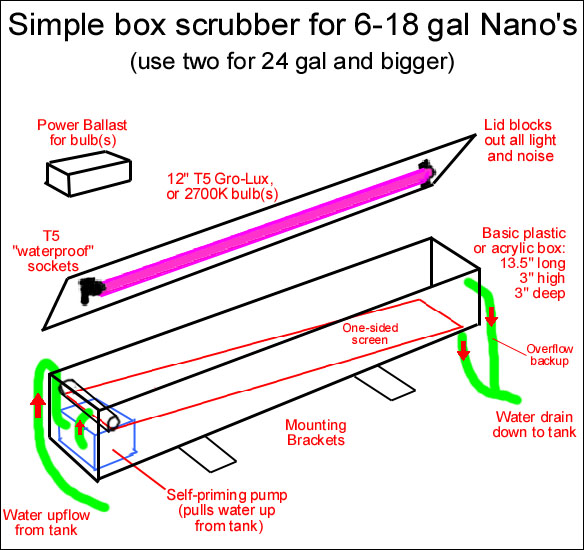 I'm not providing any links or part numbers, because it's up to the person building it to make sure that everything works together properly (it's not a beginner's project). Here are a few notes: This scrubber MUST be placed above the tank, so it drains down into the tank. The overflow drain must be lower than the bulbs. The pump must be self-priming, capable of pulling water up 12" or so from the tank. There should be no holes in the sides or bottom of the box, except for the drains; all other tubing and wires should come out of the top of the box. This will eliminate any possibility of leaky connections. Two bulbs will provide more filtering than one will. And if you can fit three, all the better. 12" T5 bulbs are only 8 watts each. The screen needs a solid backing, with some plastic canvas laid on over it. The mounting brackets could hook onto the top of the nano, or they could be made into extended legs that go all the way down to the cabinet. Or, the whole box scrubber could be set on top of the nano, and be moved as needed. The pump should be able to run "dry" without burning up. The upflow-tubing should not go very far into the display; maybe a half inch or so. This limits how much water can be pulled out of the tank if there is a problem. The size shown, 13.5" X 3" X 3", gives a one-sided screen of about 40 square inches. This will fit neatly behind (and on top of) a typical 6 or 8 gal nano without sticking out, but will also provide enough filtering for an 18 gal nano that gets weekly cleanings. For 24 gal and larger, use two separate scrubbers. This has the added benefit of redundancy, and, allows you to keep one running while the other one grows back after cleaning. Overflow protection test: (1) plug up the drain at the bottom of the screen; the water should rise and start going out the overflow drain without spilling out of the lid, and it should not get high enough to touch the bulbs. (2) Now, also plug up the overflow tube. The pump should start running dry before the box spills, if you placed the upflow tubing high enough in the tank. The T5 sockets should be the "waterproof" type, they keeps spray and salt out. They are not really "waterproof", but they are made for aquarium use. Basic costs of building one (multiples would be cheaper)... Box w/lid: $40 Pump: $35 2 Bulbs: $15 Sockets: $20 Ballast: $35 Misc: $40 --------------- Total: $185 USD 888-CORAL-REEF Filtering discussion: www.AlgaeScrubber.net |
santamonica Enthusiast Posts: 152 Kudos: 17 Registered: 19-Sep-2008   | Update: N and P are invisible: It's important to know/remember that Inorganic Nitrate and Inorganic Phosphate, which is what your test kits read, and which are also what causes the nuisance algae to grow in your tank, are invisible. You can see the results of the nitrate and phosphate; it's the nuisance algae. But you cannot see the nitrate and phosphate itself. This fact causes the most problems when people see a lot of stuff (food) that their skimmers have removed, but wonder why their nuisance algae is not being removed (skimmers don't remove Inorganic Nitrate and Inorganic Phosphate), and also when their phosphate tests zero, but they still have algae on certain parts of the rocks (the invisible phosphate is coming out of the rocks.) 888-CORAL-REEF Filtering discussion: www.AlgaeScrubber.net |
santamonica Enthusiast Posts: 152 Kudos: 17 Registered: 19-Sep-2008   | Update: FW cleanings Pods eating the algae: The reason you need to run freshwater over your screen every week is because you want to kill the baby pods that start to grow and eat the algae. You may not see the eaten areas, unless the algae is very thin like this:  However, pods are always growing and multiplying. And they eat algae. The reason this is a problem is that (1) pods are constantly flowing out of your scrubber into the tank. If they eat algae first, then the nitrate and phosphate that is in that algae gets released back into the water, and (2) you now have less algae to do the filtering. Unlike the picture above, however, the algae is usually too thick for the eaten areas to be seen. The pods stay out of the light, in the underlying la 888-CORAL-REEF Filtering discussion: www.AlgaeScrubber.net |
santamonica Enthusiast Posts: 152 Kudos: 17 Registered: 19-Sep-2008   | Successes Update: sean48183 on the SWF site: "Alright, just tested NO3 and ta da! 0 NO3! Awesome. Still have some hair algae in display, but appears to have slowed down. My scrubber is still getting mostly brown slime and some green. Don't really care. It is working. Have to clean every couple days because it is growing so fast. Anyone who is debating trying -- quit debating and just do it." ScubaDrew on the RS site: "I built a small one using the basic plans posted in the first few pages. I used a dremmel to cut the slot in the PVC and used fishing line through the small holes in the plastic divider material to hold it up. My tank measured 0’s in all the algae related categories prior to building it, but my tank was still growing a lot of HA and some cyano. I’ve only got one florescent ‘flood’ style light on one side of the scrubber right now due to having placed it in an already crowded sump. I had a full coat of algae in about 10 days, and cleaned off about ¾ of what had accumulated at that time. Now I need to clean off a large, heavy, handful every week! With continued cleaning in my DT, I’ve really made progress in getting the DT algae free. Thanks for the info, I think the ATS will be a part of my system for a long time to come." RiaanP on MASA site: "Scrubber running now for four weeks. NO3 0mg/l (first time EVER). PO4 between .025 and 0.5 mg/l. 4 weeks ago NO3 was over 100 mg/l and PO4 was over 2 mg/l. So a scrubber really works." 888-CORAL-REEF Filtering discussion: www.AlgaeScrubber.net |
santamonica Enthusiast Posts: 152 Kudos: 17 Registered: 19-Sep-2008   | Part 2 of 7: Taken from "From the Food of Reefs to the Food of Corals" by Eric Borneman http://www.reefkeeping.com/issues/2002-08/eb/index.php "Nitrogen levels in [natural] coral reef waters are typically extraordinarily low, with most being found as ammonia. This is in contrast to aquaria, where the dominant nitrogen species is usually nitrate. Nitrogen is the be-all end-all for zooxanthellae growth and reproduction [zooxanthellae is what photosynthesizes light into food for corals]. By limiting nitrogen in the form of excretion products, the [coral] polyps keep the zooxanthellae in the numbers and density that maximize photosynthetic efficiency for its own use. Using several released compounds, most of which are still unidentified, the [coral] polyp stimulates the zooxanthellae to release virtually all of the products of its photosynthesis, and these are then used by the polyp for its own needs. If nitrogen was made readily available to the zooxanthellae (for example, if high levels were present in the water and this dissolved nitrogen diffused into the coral tissue), it could then be accessed by the algae without limitation by the polyp, and zooxanthellae could begin to grow and reproduce like a phytoplankton culture. In this case, the symbiosis becomes less advantageous to the coral, and it will expel some of the symbionts to try and re-establish maximal benefit from its algal partners. As a practical note, when very high densities of zooxanthellae exist in coral tissue [because of to much nitrogen], the resultant coloration of the coral is usually a rich or dark brown color. "Coral mucus, in turn, and as was shown in the previous article, is itself a food source to the reef. [Skimmer remove mucus, but do not remove nitrogen] 888-CORAL-REEF Filtering discussion: www.AlgaeScrubber.net |
santamonica Enthusiast Posts: 152 Kudos: 17 Registered: 19-Sep-2008   | Question: Anyone know where to buy marine self-priming pumps? Several people are trying to build the top-of-nano scrubber I posted, but in order to put the pump in the scrubber (and thus not in the display), the pump needs to be able to pull water up and out of the display. So far, the only thing found is the Eclipse nano hoods with small pumps built in, and a few other HOB filters with small self-priming pumps built in. But these are built-in and molded to the other parts. What is really needed is a self-contained pump that is separate from the other parts, and which of course is aquarium safe, and in the 70 to 150 gph range (266 to 570 lph). 888-CORAL-REEF Filtering discussion: www.AlgaeScrubber.net |
santamonica Enthusiast Posts: 152 Kudos: 17 Registered: 19-Sep-2008   | Update: Nutrients vs. Nutrition It's important to understand the difference between these two words. "Nutrients" generally means Inorganic Nitrate and Inorganic Phosphate, which are the things that you measure with your test kits, and which are also the things that nuisance algae feed on. "Nutrition", however, generally means food for corals and fish. Natural reefs in the ocean are high in "nutrition" (lots of food particles floating around), but low in "nutrients" (nitrate and phosphate). Aquariums that have skimmers, or other mechanical filters like foam or floss, are low in nutrition because the food is filtered out, but they are high in nutrients because the Inorganic Nitrate and Inorganic Phosphate is not filtered. Aquariums that have only scrubbers are high in nutrition but low in nutrients. Aquariums with both skimmers and scrubbers are low in both nutrition and nutrients. 888-CORAL-REEF Filtering discussion: www.AlgaeScrubber.net |
santamonica Enthusiast Posts: 152 Kudos: 17 Registered: 19-Sep-2008   | Part 7 of 7: "The Food of Reefs, Part 7: Dissolved Nutrients" by Eric Borneman http://reefkeeping.com/issues/2003-04/eb/index.php "Mucus consists of mainly sugars and glycoproteins - soluble materials in and of themselves. However, the formation of mucus, and its release in a matrix of chains of these materials, may result in a particulate material. This material is both utilized directly by many organisms, and also forms the basis for a predominant fraction of the particulate "marine snow" on reefs. "In fact, reef waters are 30-40% higher in DOM [disolved organic matter] than oceanic waters. "In terms of determining the degree to which organisms may use dissolved material as significant source of nutrition, one may examine the surface area of the outer cell membranes exposed to such materials. In general, the larger the absorptive area, the more likely organisms are to depend on absorption. Some cell surfaces are covered with many finger-like processes called microvilli that greatly increase the surface area of the membrane. Furthermore, the presence of cilia is often a good indicator of absorptive surfaces. Perhaps not surprisingly, corals have extensive microvilli and cilia. "Corals are able to take up various forms of both organic and inorganic dissolved nitrogen. "Even slightly elevated nitrogen levels can quickly result in rapid increases in the density of zooxanthellae, as they use it to fuel their own reproduction" [and thus turn the coral brown] "It is also somewhat equivocal that corals are able to utilize nitrate (which exists nearly totally in its ionic state at physiological pH) at all, and an inability to find nitrate reductase in many studies, makes the ultimate importance of this dissolved nitrogen source to corals (and anemones) rather tenuous. However, it is unambiguously true that ammonium is a sought-after nitrogen source by both coral host and algal partner. "Humic (refractory) compounds: These yellowing compounds are typically found at relatively high levels in aquaria, and they are removed with protein skimming and activated carbon. Humic materials have been thought to be relatively inert and unavailable for use as a nutrient source. However, studies have shown that organisms from bacteria to brine shrimp (Artemia salina) can utilize humic substances as a source of nutrients. "In terms of corals reefs, the amounts of most dissolved nutrients, except carbon in most cases, are very low. "The higher nutrient levels may cause corals and other symbiotic partnerships to decline as the partner algae preferentially utilize the increased nutrient sources to the expense of the host. [and thus browning of the coral occurs] "Without question, corals and many reef organisms are able to utilize dissolved nutrients to help meet their energy requirements and to use in tissue growth. 888-CORAL-REEF Filtering discussion: www.AlgaeScrubber.net |
santamonica Enthusiast Posts: 152 Kudos: 17 Registered: 19-Sep-2008   | Anyone still reading this thread and want me to keep posting? I'm doing some cleanup... 888-CORAL-REEF Filtering discussion: www.AlgaeScrubber.net |
FRANK                Moderator Posts: 5108 Kudos: 5263 Votes: 1690 Registered: 28-Dec-2002    | Hi, Actually, I have read every single one of your postings and looked at every picture. But... I've a freshwater tank! The information that you have posted here over the years is invaluable to someone in the marine environment, and should I switch over to the "dark side" I would follow your advice and examples. Your posts seemed to be a log of your experiences, and not necessarily one urging replies or comments. I've always figured that you were corresponding with your readers on the side, and thus never posted here, until now. I'd vote for you to continue with your postings. Frank  -->>> The Confidence of Amateurs, is the Envy of Professionals <<<-- |
santamonica Enthusiast Posts: 152 Kudos: 17 Registered: 19-Sep-2008   | New scrubber update: The new design will not require a slot in the pipe. If you have not built one yet, and you have trouble with DIY, then you might wait for the new DIY plans to be posted; there should be no hard-to-cut pieces (like a slot), at least for the very simple versions. 888-CORAL-REEF Filtering discussion: www.AlgaeScrubber.net |
FRANK                Moderator Posts: 5108 Kudos: 5263 Votes: 1690 Registered: 28-Dec-2002    | |
santamonica Enthusiast Posts: 152 Kudos: 17 Registered: 19-Sep-2008   | Thanks. I just got a bit busy with the day job stuff. But I'll be spending more time on the new designs, since they are nano-friendly and dirt-cheap to make (everyone probably has all the parts to make them already.) 888-CORAL-REEF Filtering discussion: www.AlgaeScrubber.net |
santamonica Enthusiast Posts: 152 Kudos: 17 Registered: 19-Sep-2008   | Here is a comparison of the types of bulbs to use:  888-CORAL-REEF Filtering discussion: www.AlgaeScrubber.net |
santamonica Enthusiast Posts: 152 Kudos: 17 Registered: 19-Sep-2008   | Less than 2 weeks until the new design is posted... 888-CORAL-REEF Filtering discussion: www.AlgaeScrubber.net |
santamonica Enthusiast Posts: 152 Kudos: 17 Registered: 19-Sep-2008   | Phosphate flow out of rocks Many people, when they get their scrubber running for the first time, get worried when more (not less) algae starts to grow on their rocks. It seems really strange, especially when nitrate and phosphate have gone lower than before. What is happening is that phosphate is coming out of the rocks. Remember, phosphate is invisible, so you can only see the effects of it, and it always "flows" from higher concentrations to lower concentrations (just like heat does). Example: If your room is warm, and you put a cold ob Think of phosphate as the heat, and your rocks as the ob This flow causes an interesting thing to happen. As the phosphate comes out of the rocks, it then becomes available to feed algae as soon as the phosphate reaches the surface of the rocks where there is light. So, since the surface of the rocks is rough and has light, it starts growing MORE algae there (not less) as the phosphate comes out of the rocks. This is a pretty amazing thing to see for the first time, because if you did not know what was happening you would probably think that the algae in the scrubber was leaking out and attaching to your rocks. Here are the signs of phosphate coming out of the rocks: 1. The rocks are older, and have slowly developed algae problems in the past year. 2. The scrubber is new, maybe only a few months old, and has recently started to grow well. 3. Nitrate and phosphate measurements in the water are low, usually the lowest they have been in a long time. 4. Green hair algae (not brown) on the rocks has increased in certain spots, usually on corners and protrusions at the top. 5. The glass has not needed cleaning as much. Since skimmers, filter socks, etc don't remove any nitrate and phosphate, and waterchanges and macro's in a fuge don't remove much, most people have never seen the effects of large amounts of phosphate coming out of the rocks quickly. But sure enough, it does. How long does it continue? For 2 months to a year, depending on how much phosphate is in the rocks, how strong your scrubber is, and how many other phosphate-removing filters you have (GFO, carbon dosing, etc). But one day you will see patches of white rock that were covered in green hair the day before; this is a sure sign that the algae are losing their phosphate supply from the rocks and can no longer hold on. Now it's just a matter of days before the rocks are clear. 888-CORAL-REEF Filtering discussion: www.AlgaeScrubber.net |
santamonica Enthusiast Posts: 152 Kudos: 17 Registered: 19-Sep-2008   | Very nice scrubber-only tank: http://algaescrubber.net/forums/showthread.php?2702-180g-Show-Tank&p=35853&viewfull=1#post35853 His personal page: http://home.comcast.net/~dgrigor/ 888-CORAL-REEF Filtering discussion: www.AlgaeScrubber.net |
santamonica Enthusiast Posts: 152 Kudos: 17 Registered: 19-Sep-2008   | Coming this summer 2016: Waterfall algae scrubber Version 2 After I invented the waterfall scrubber in 2008, it's great that so many people got to DIY it, and it's also great that lots of builders/sellers used it as their design up until the current day. It's had over 7 years to gather hobbyists. 2012 was a good year though, when I introduced the upflow scrubber. It's only had 3 years to gather hobbyists, but offers them what they did not have before: a compact place where they can put a scrubber that does not spill over when it fills up. Now that the upflows are established, it's time to do some more work on the waterfalls. They've been unchanged since 2008, and almost every part of them can be improved. So over the next year or two I'll post up the improvements piece by piece. Hopefully the improvements will be useful to all. 888-CORAL-REEF Filtering discussion: www.AlgaeScrubber.net |
| Jump to: |
The views expressed on this page are the implied opinions of their respective authors.
Under no circumstances do the comments on this page represent the opinions of the staff of FishProfiles.com.
FishProfiles.com Forums, version 11.0
Mazeguy Smilies